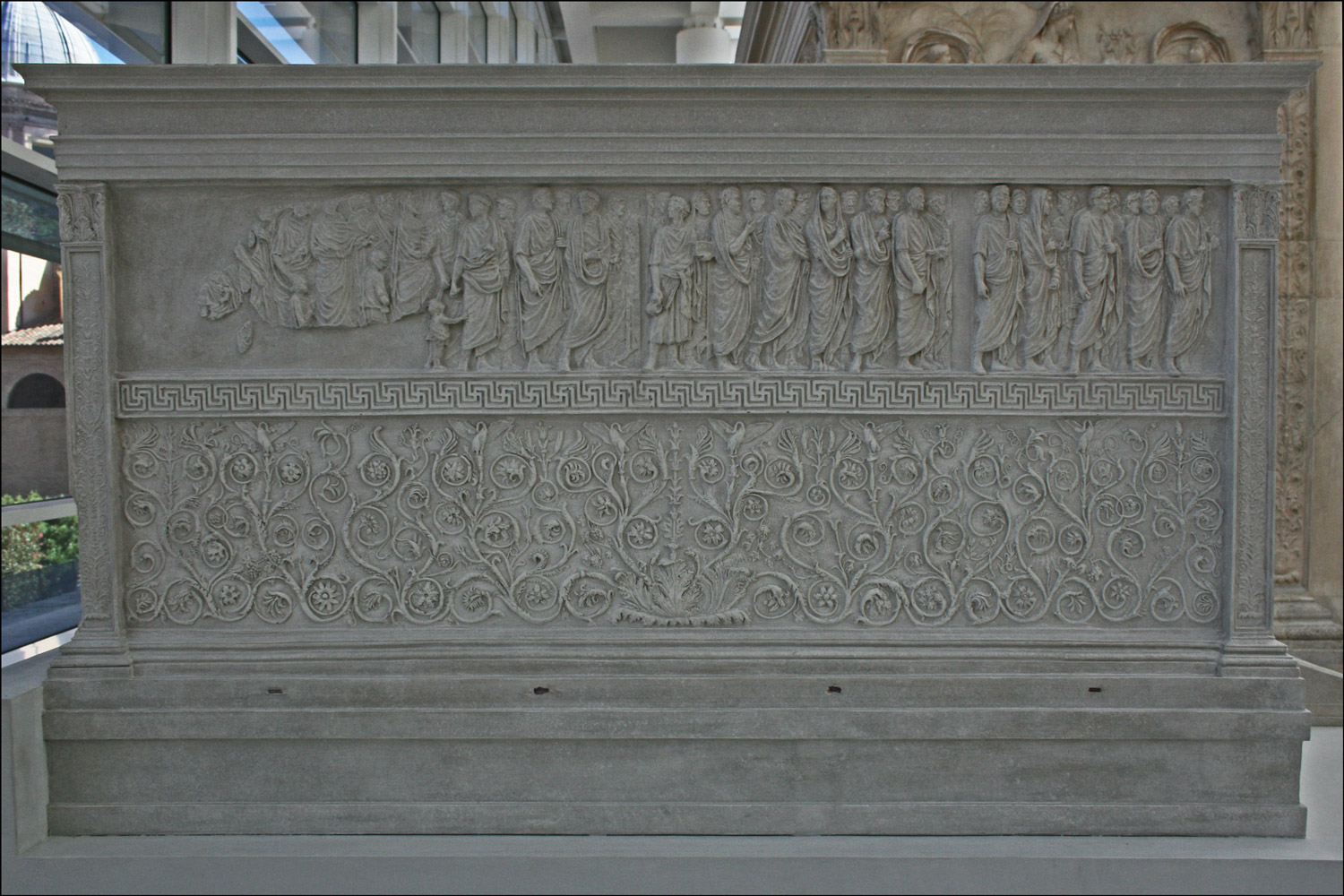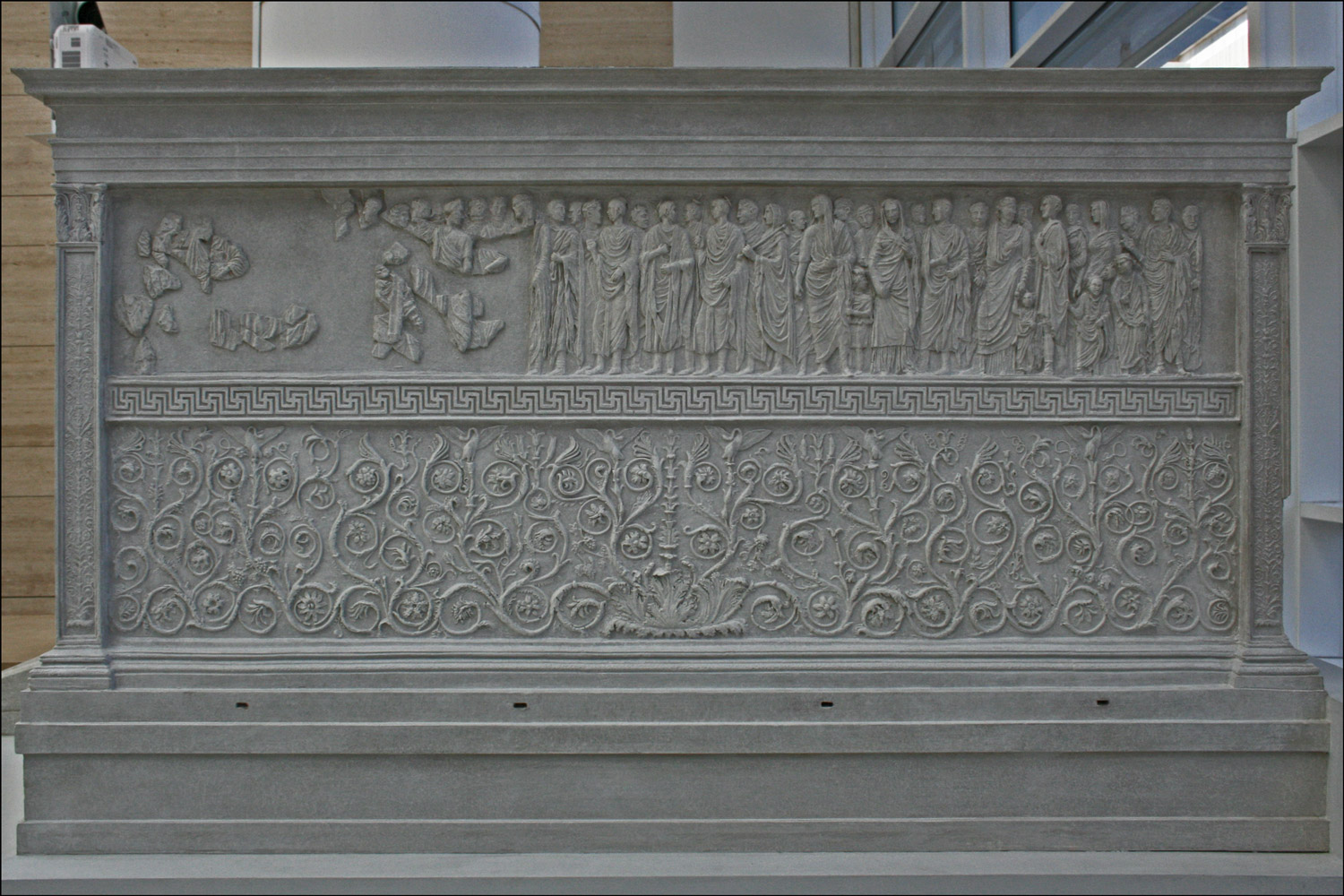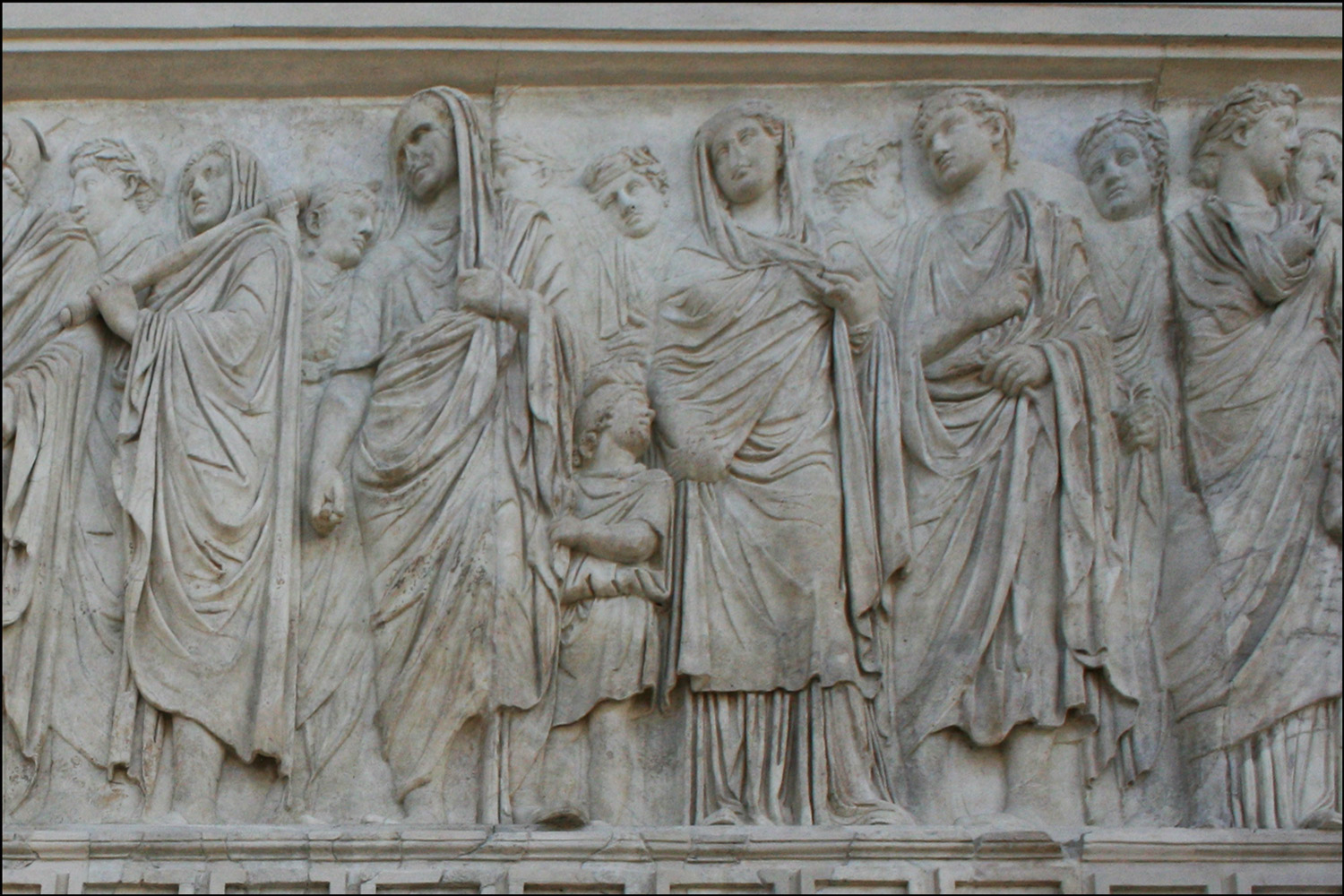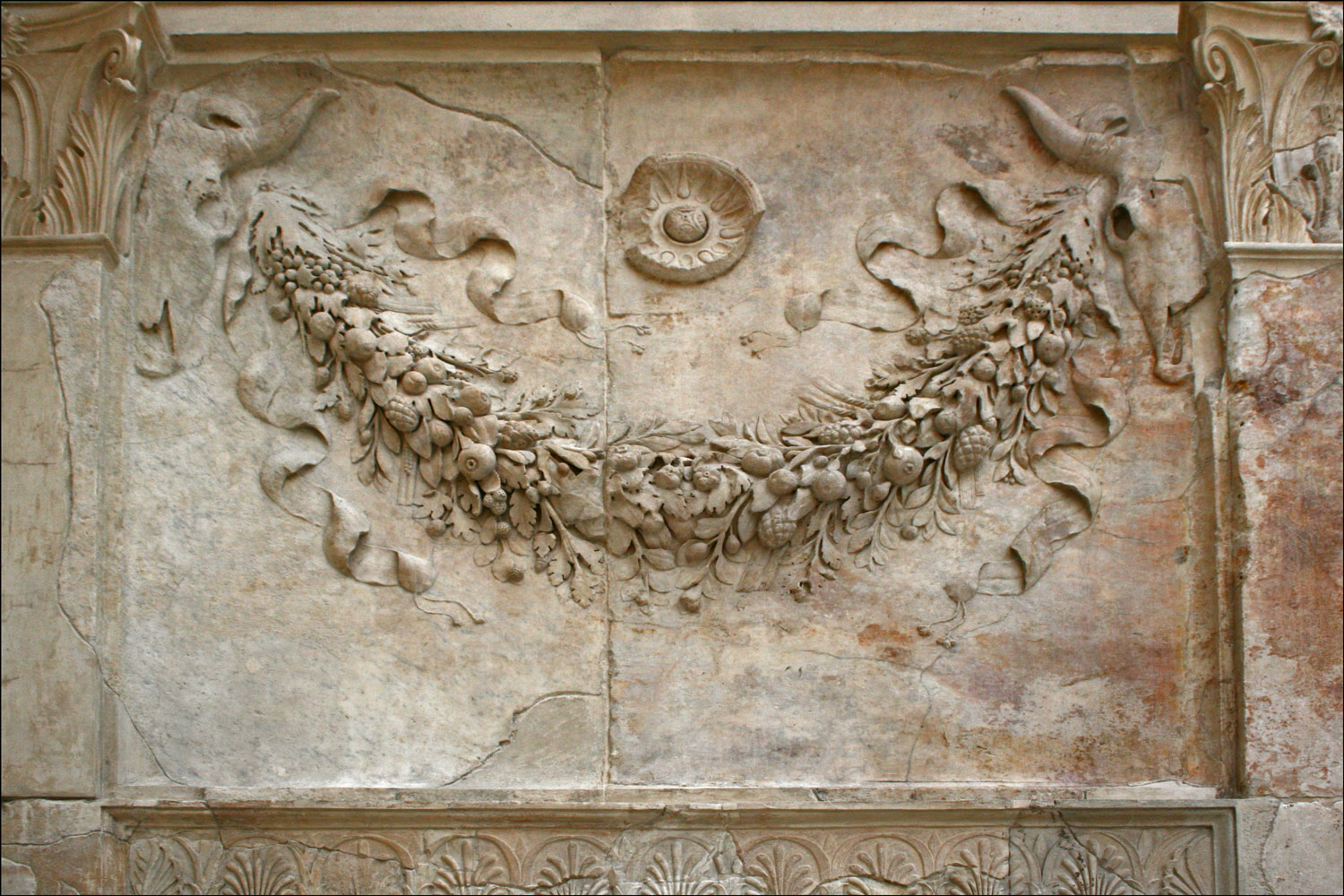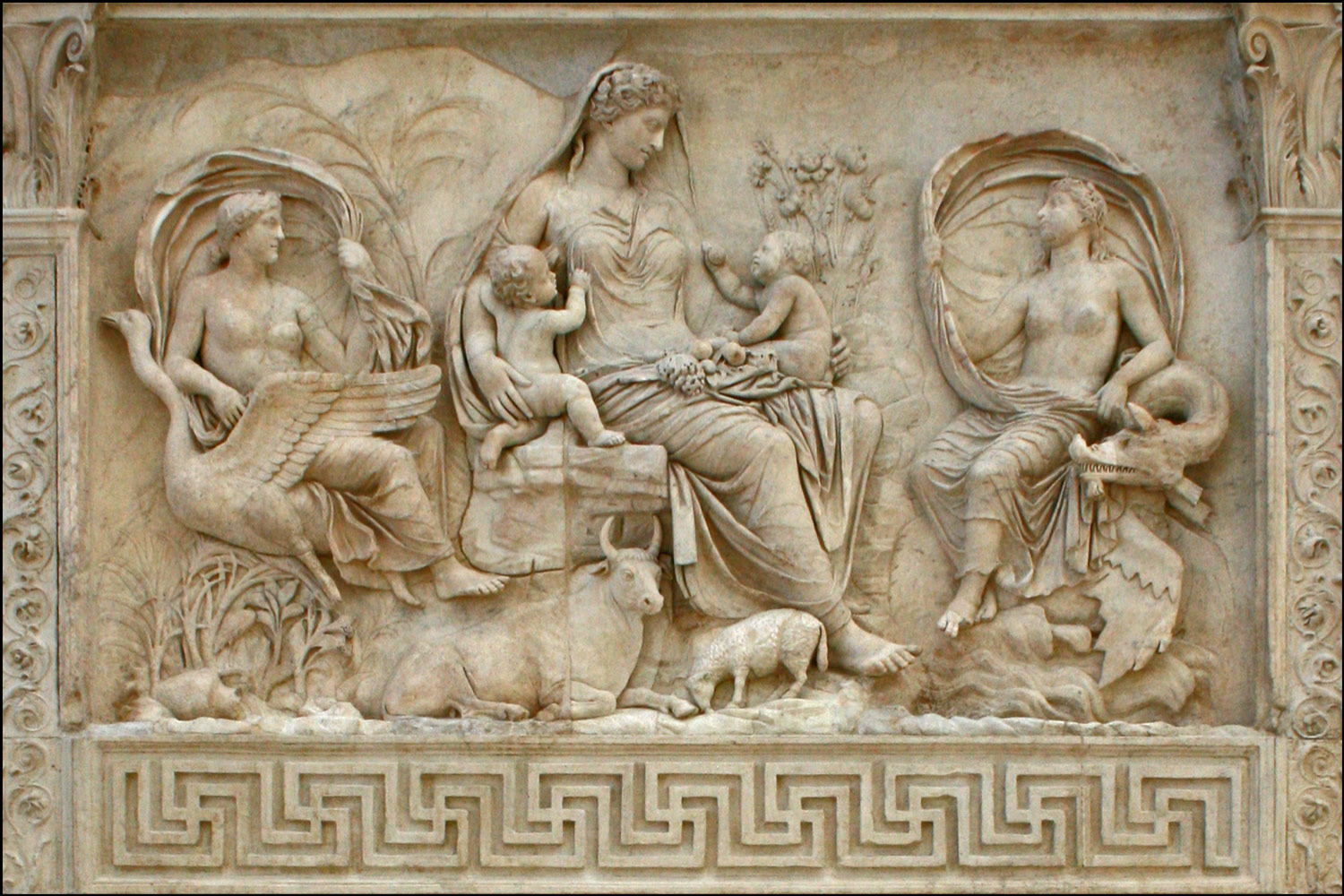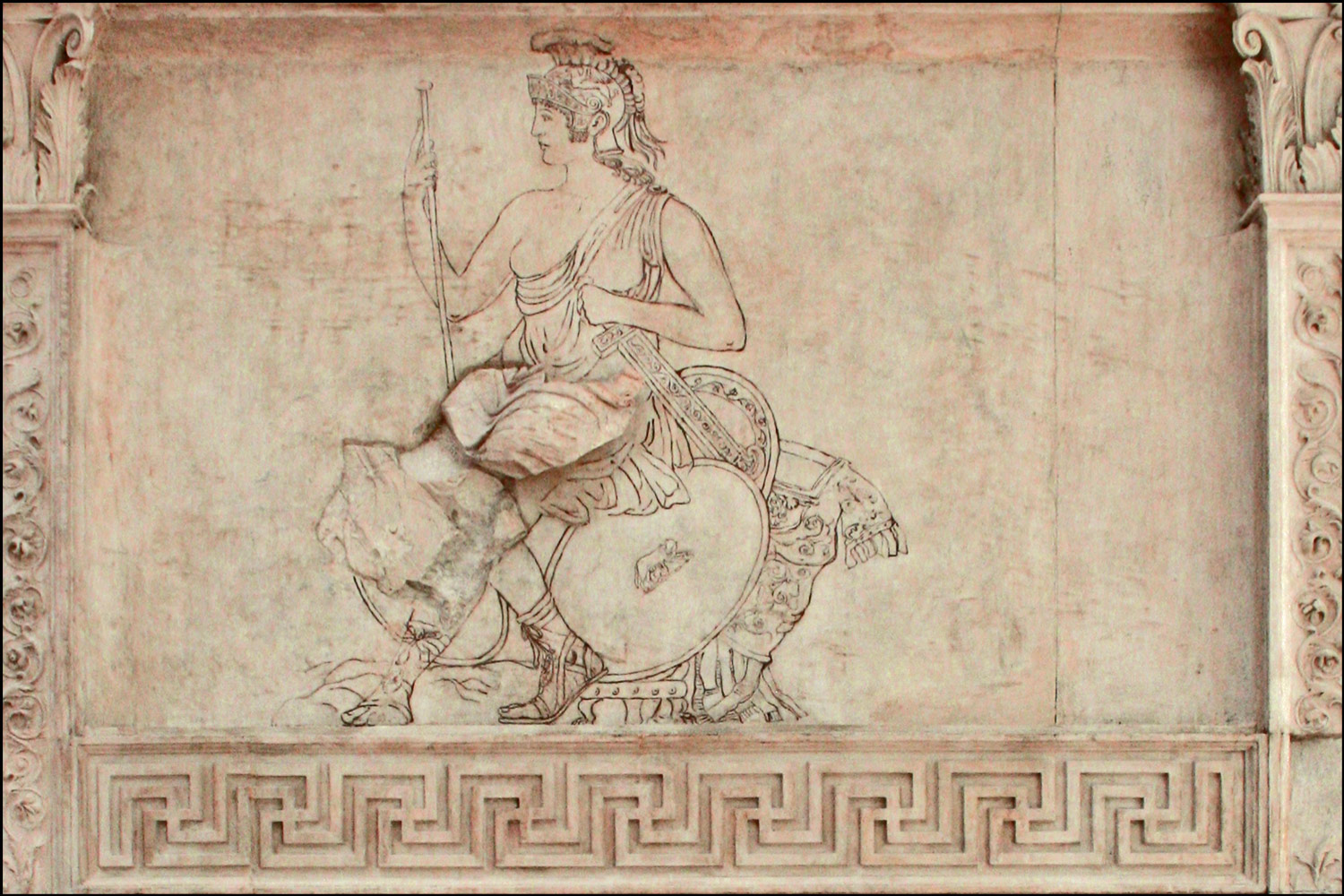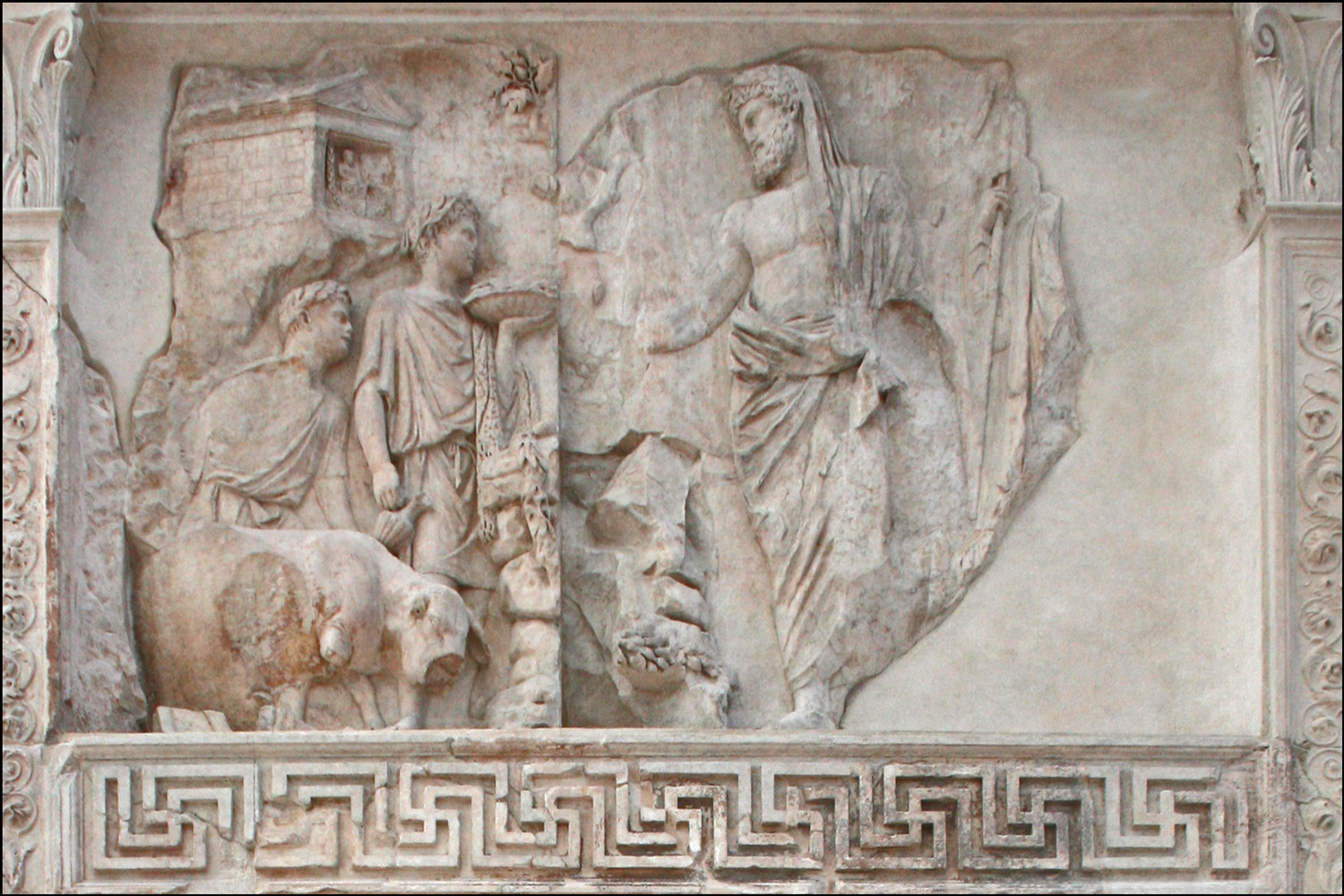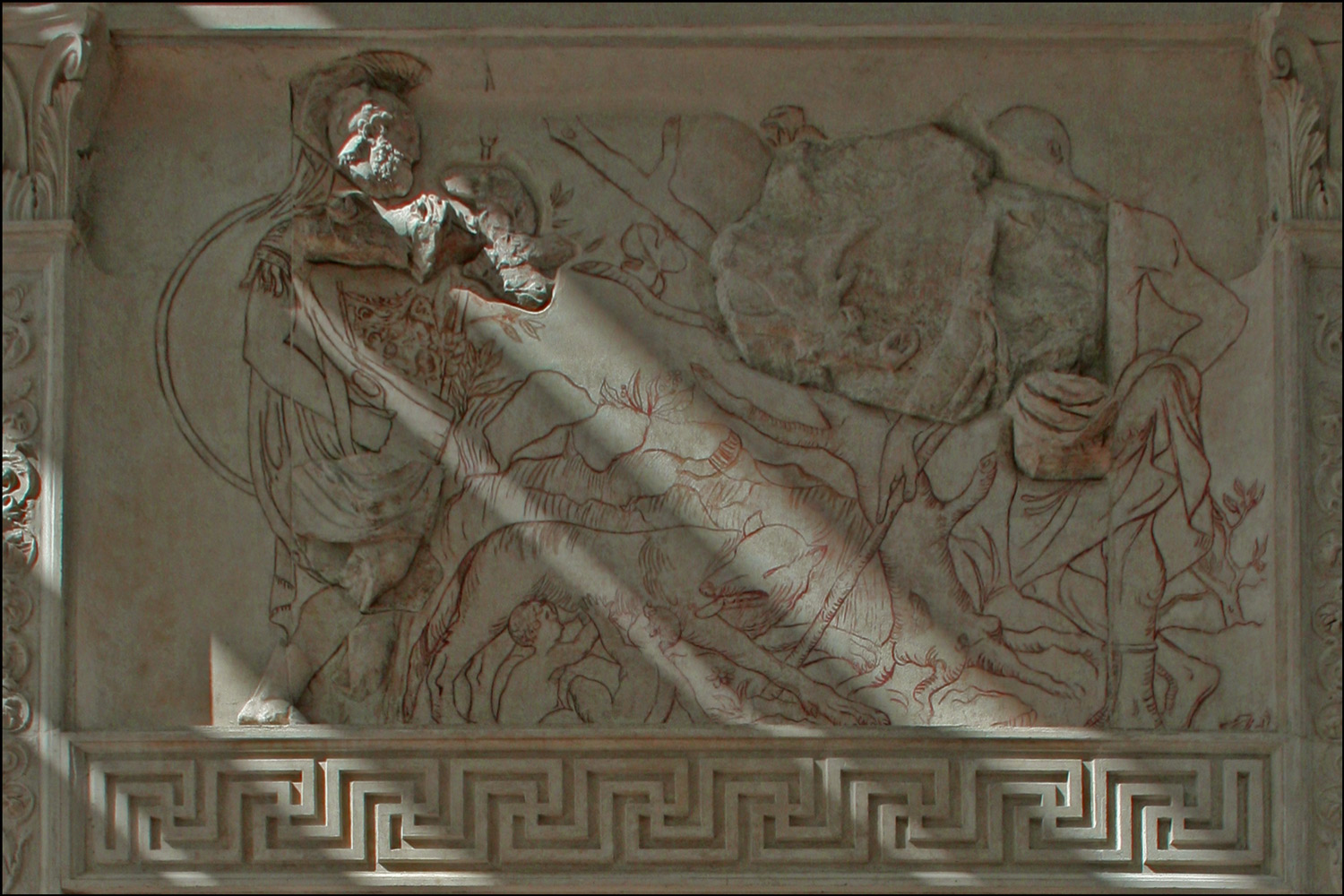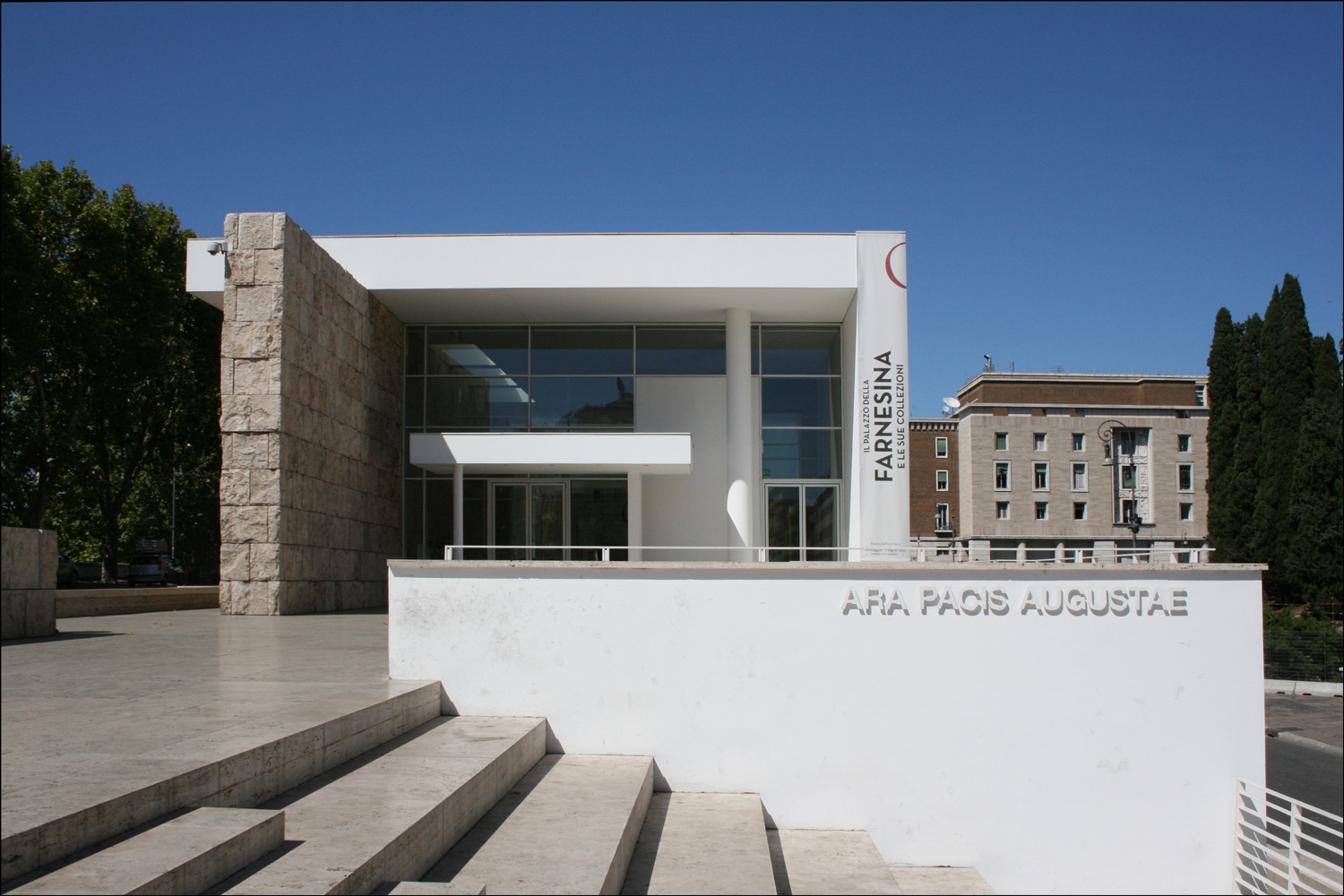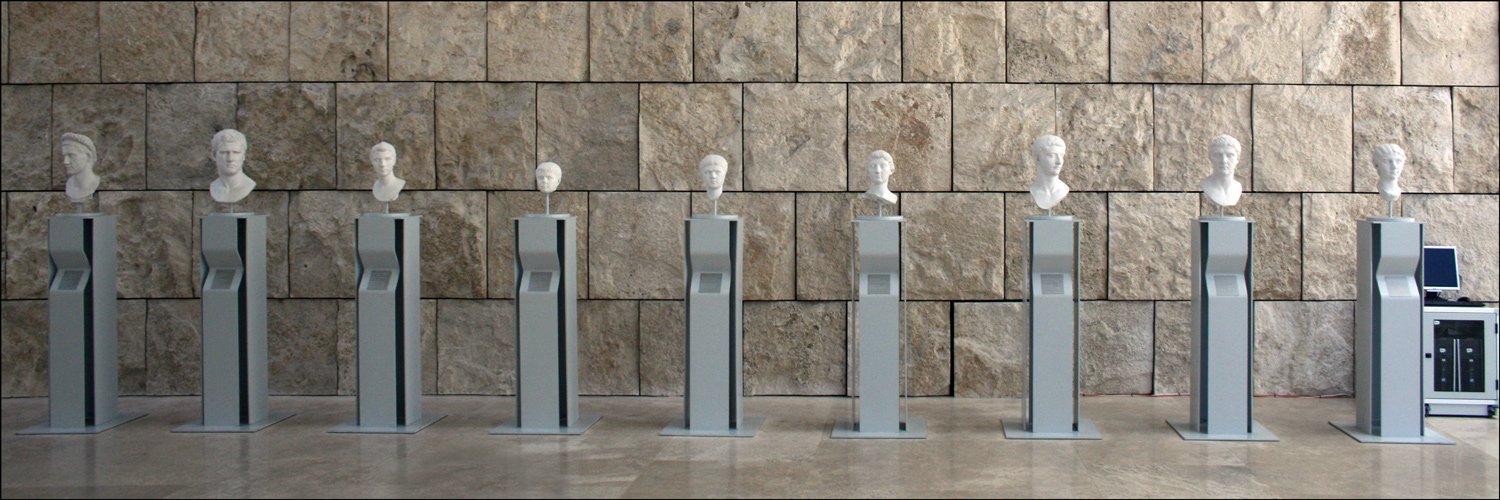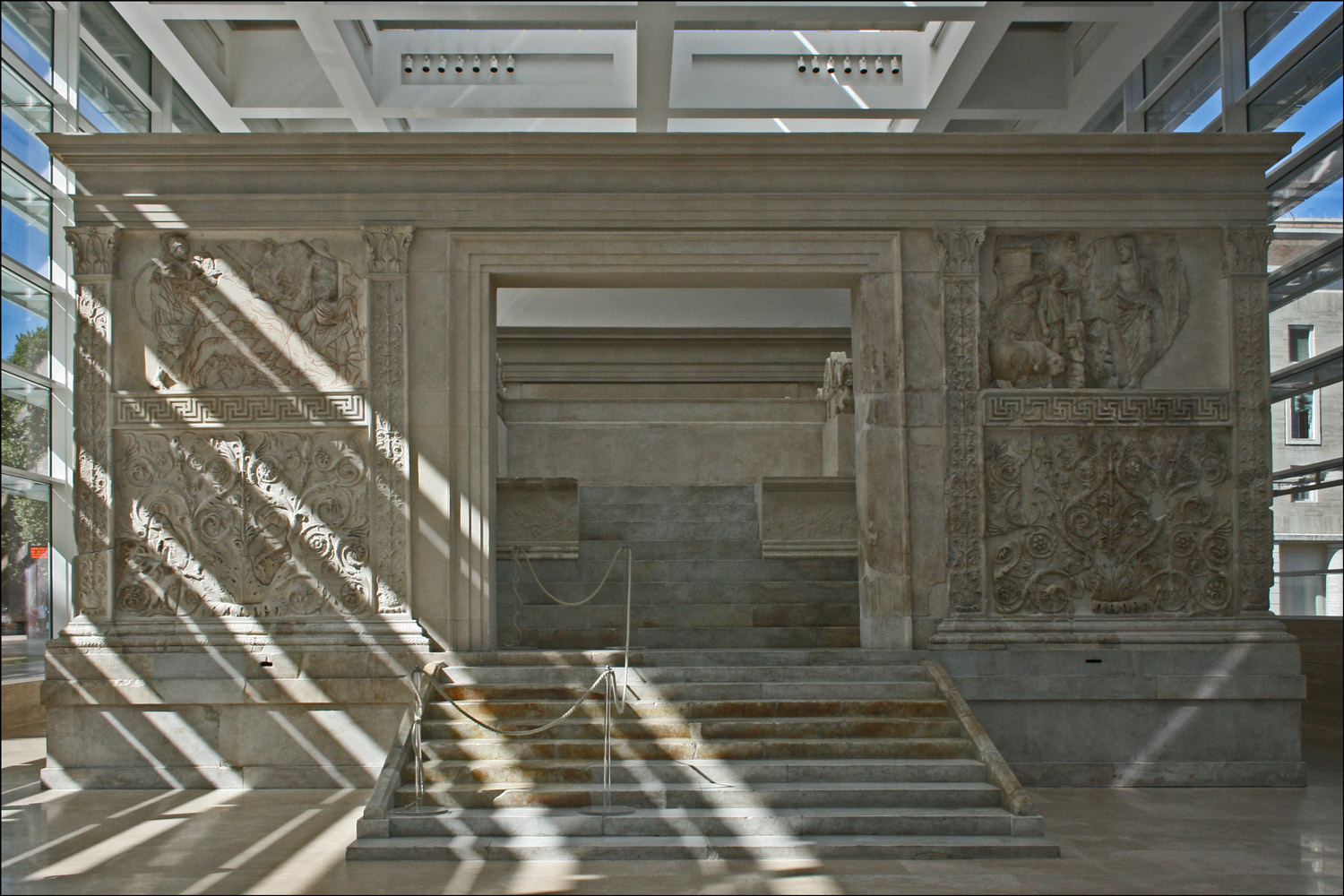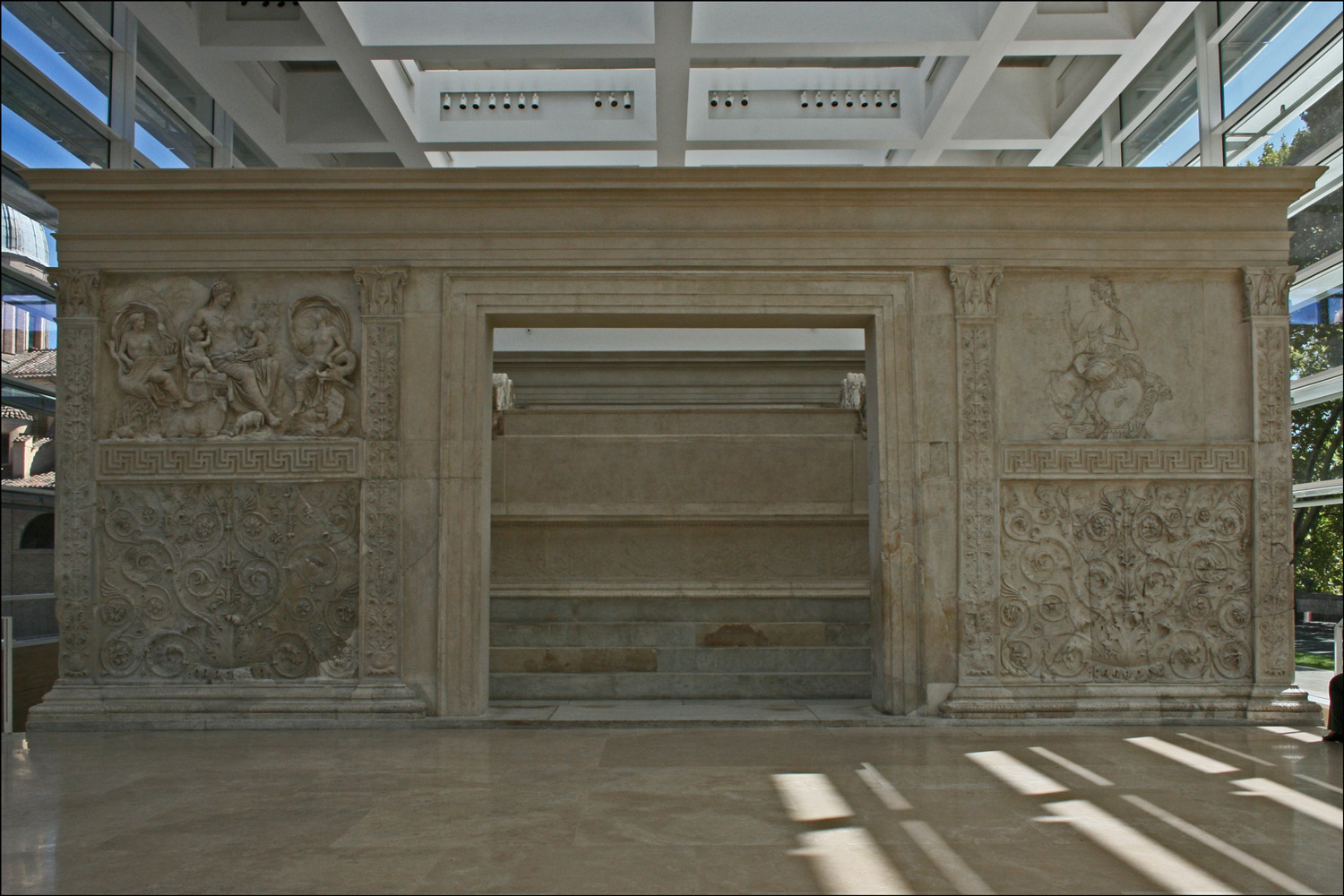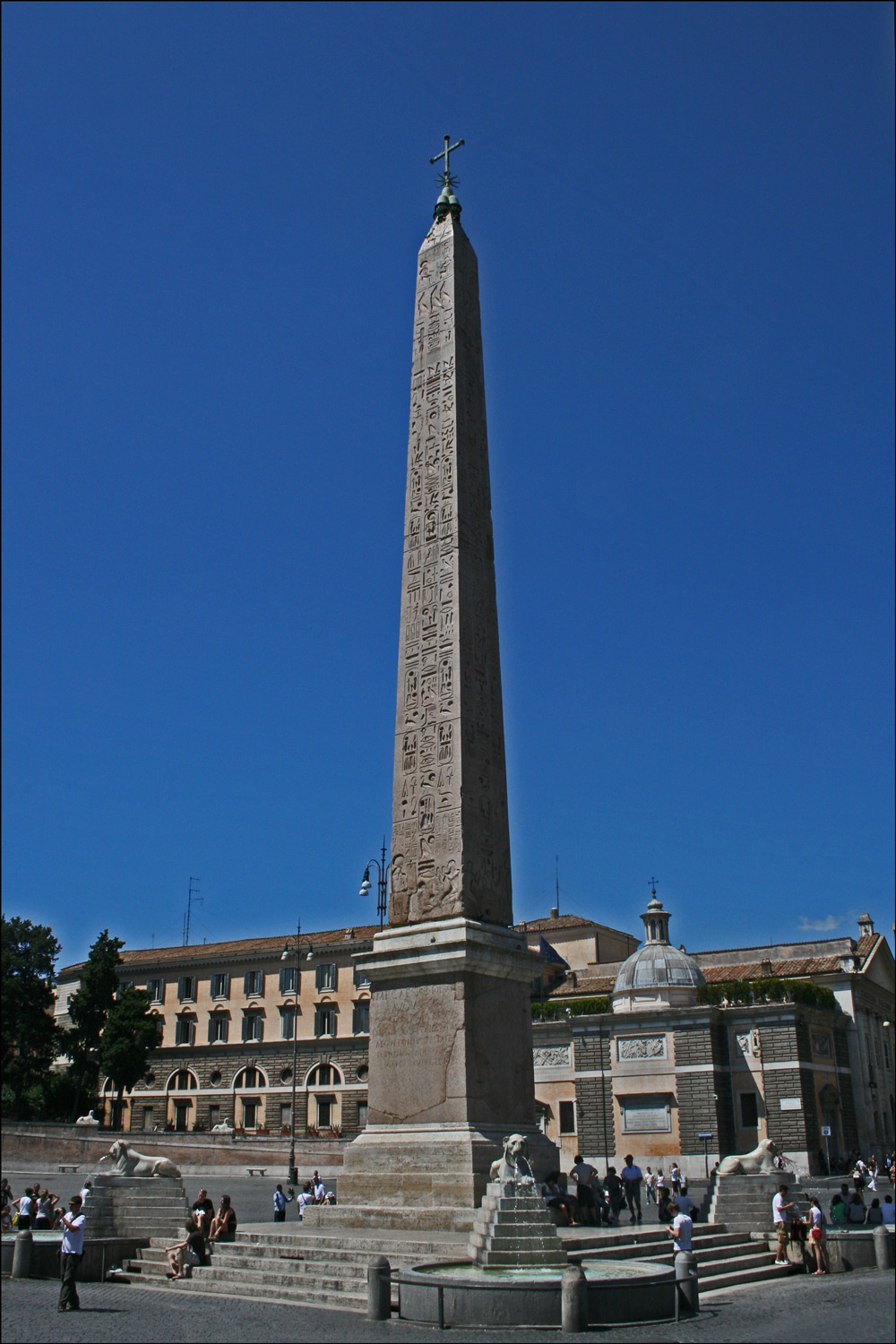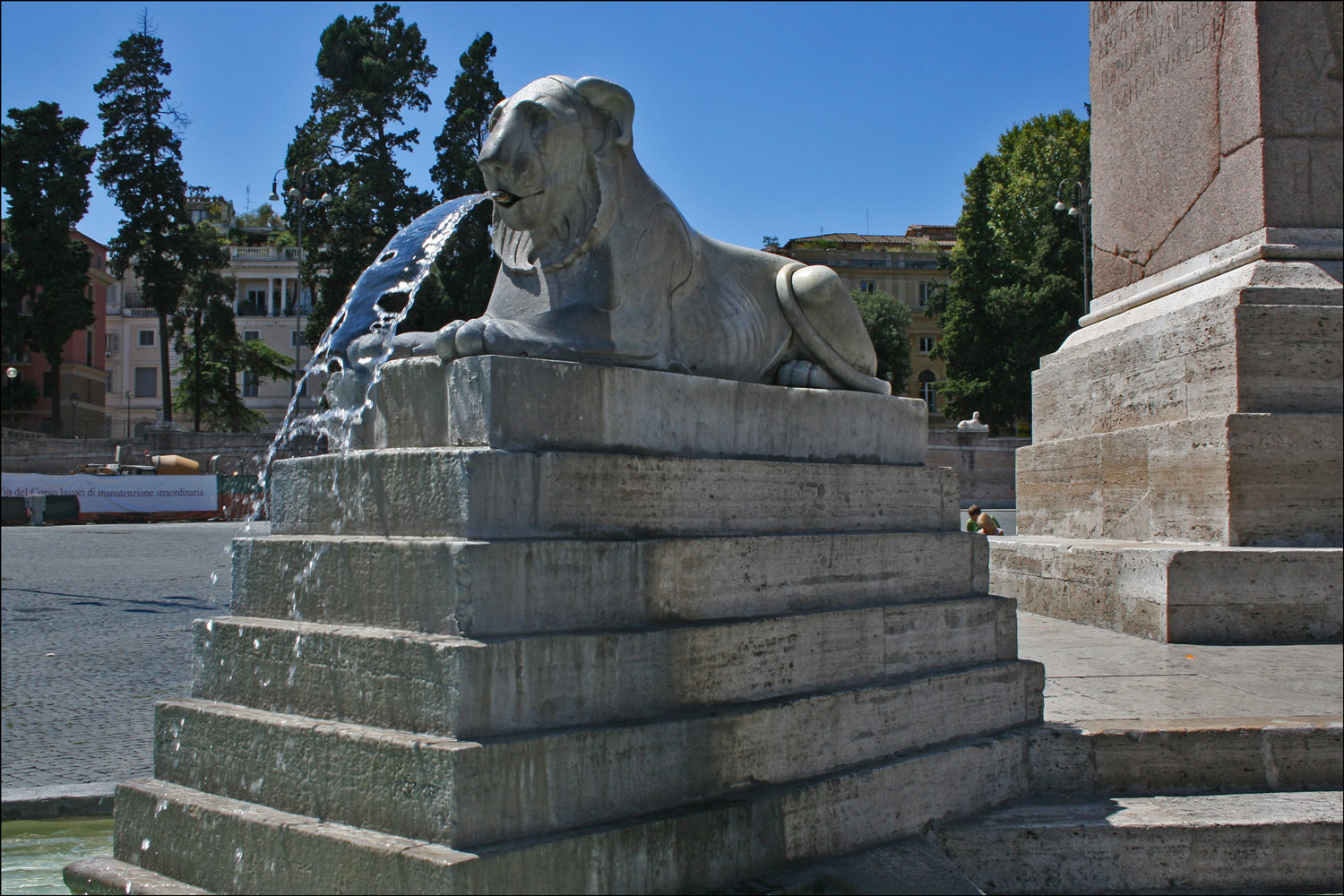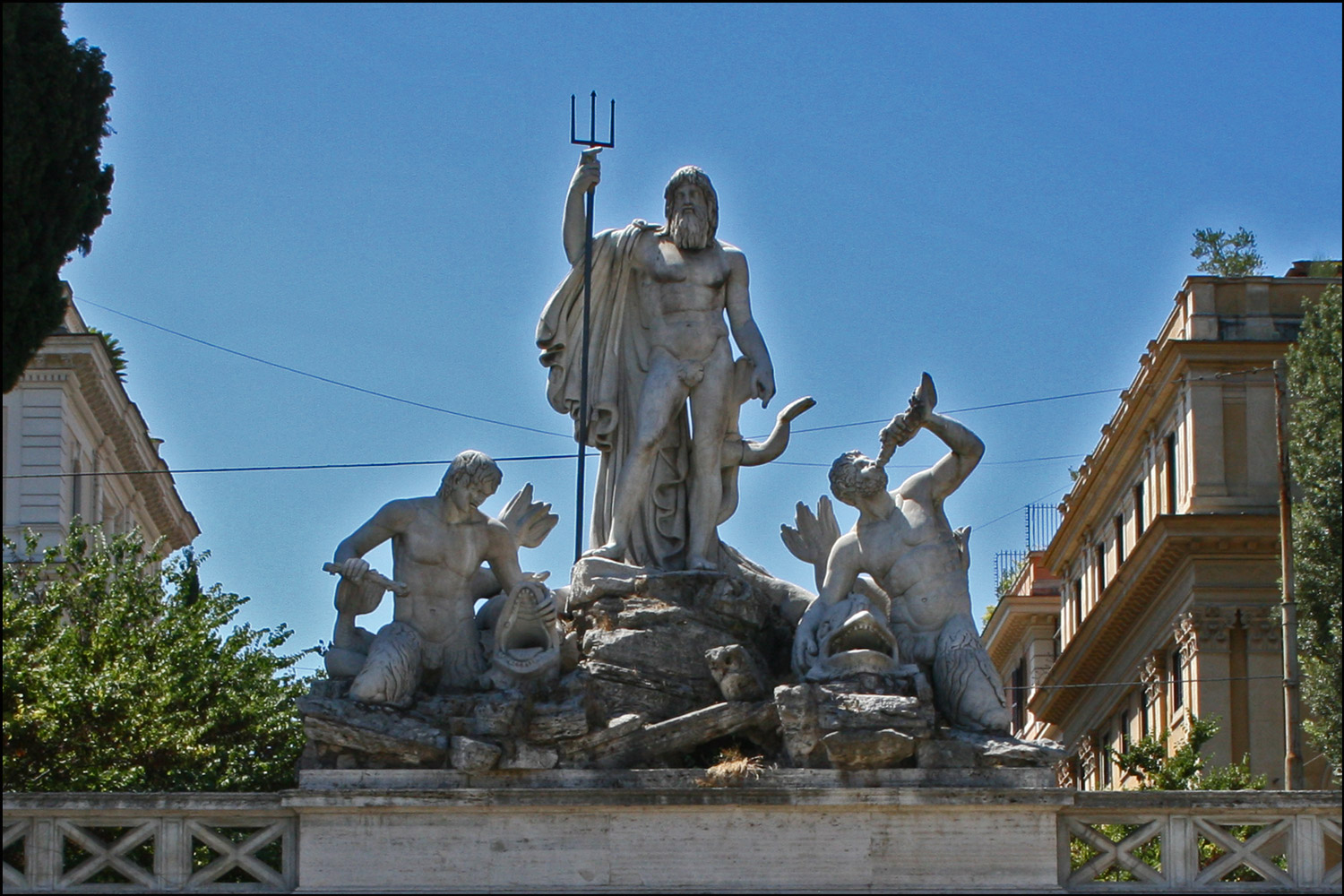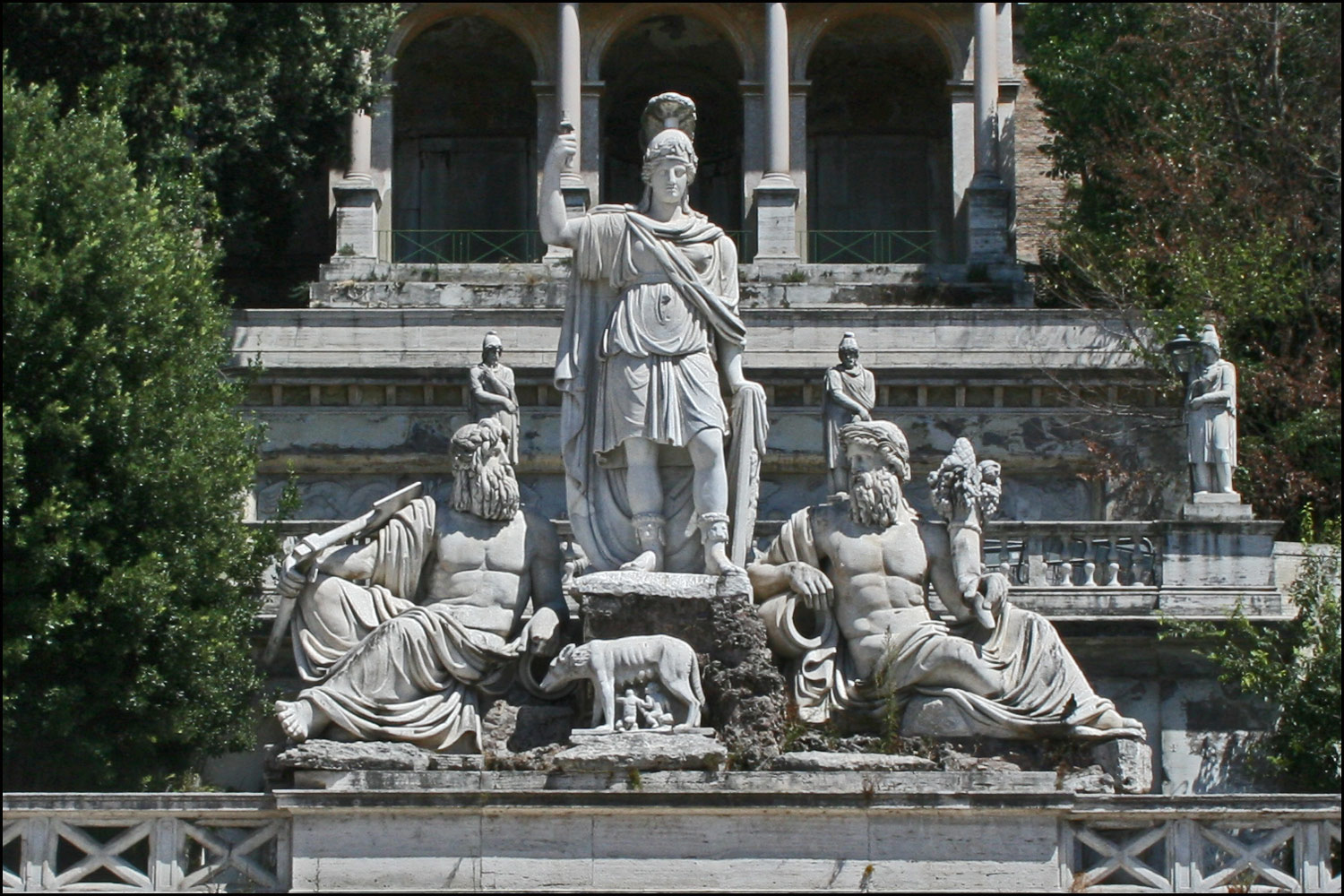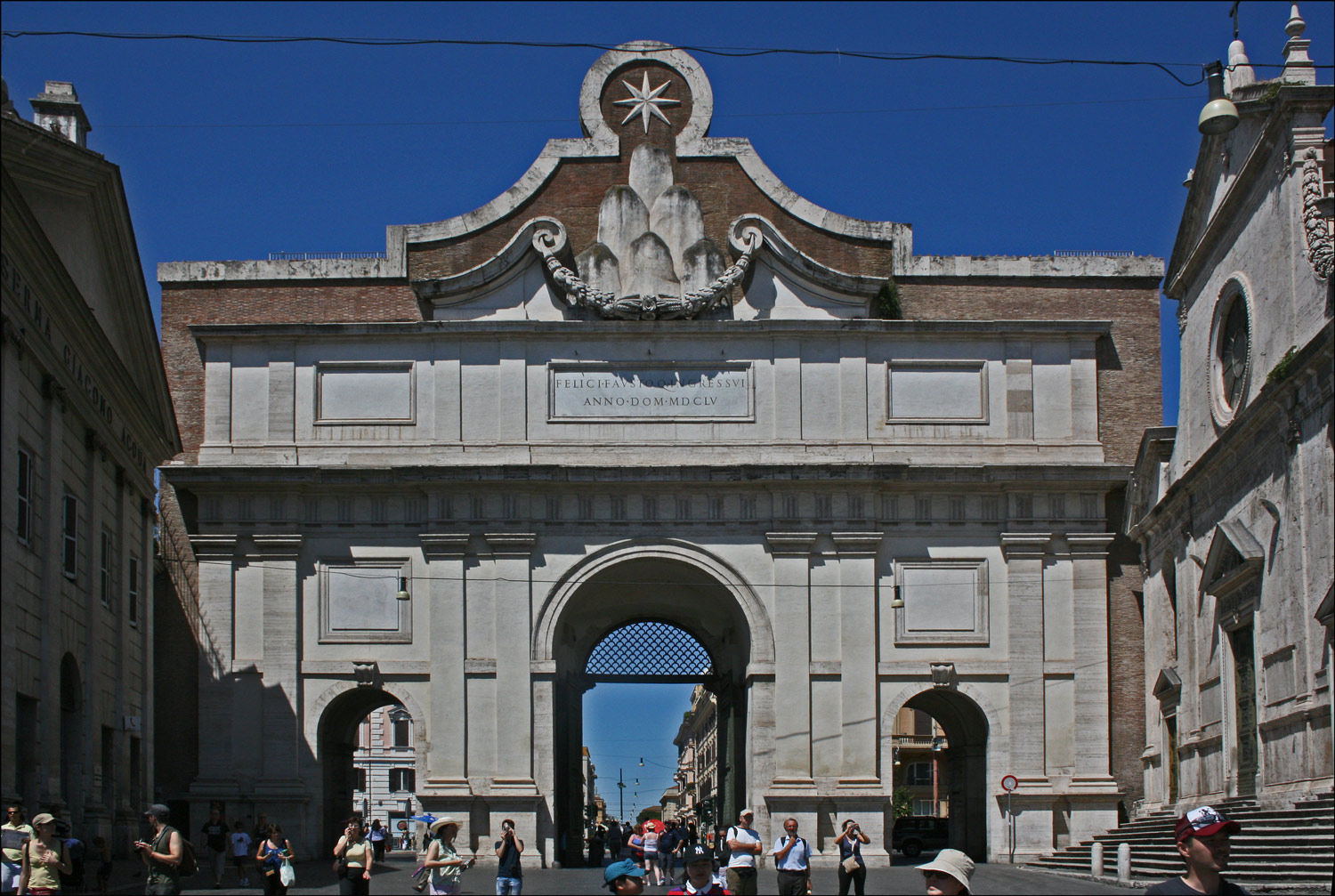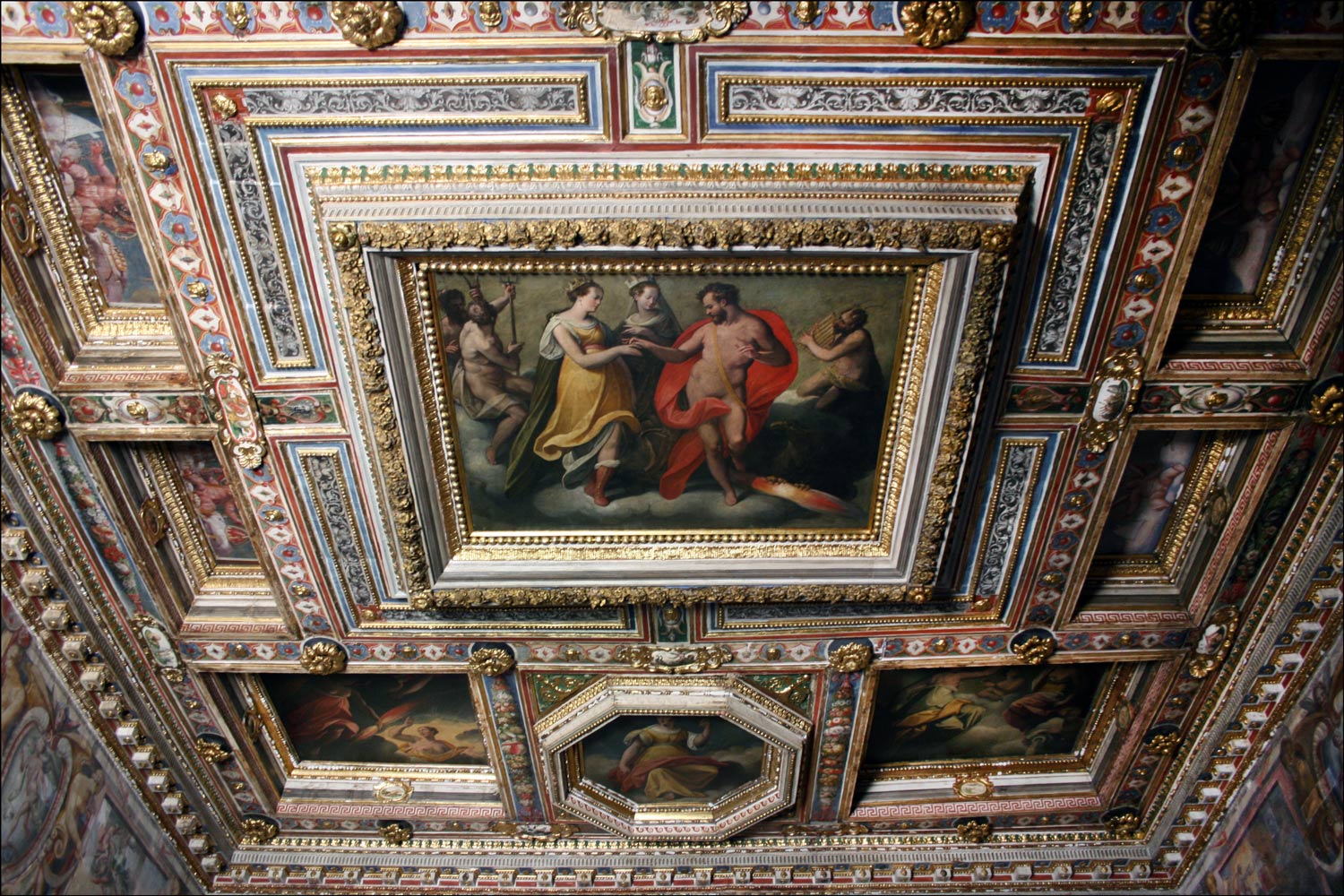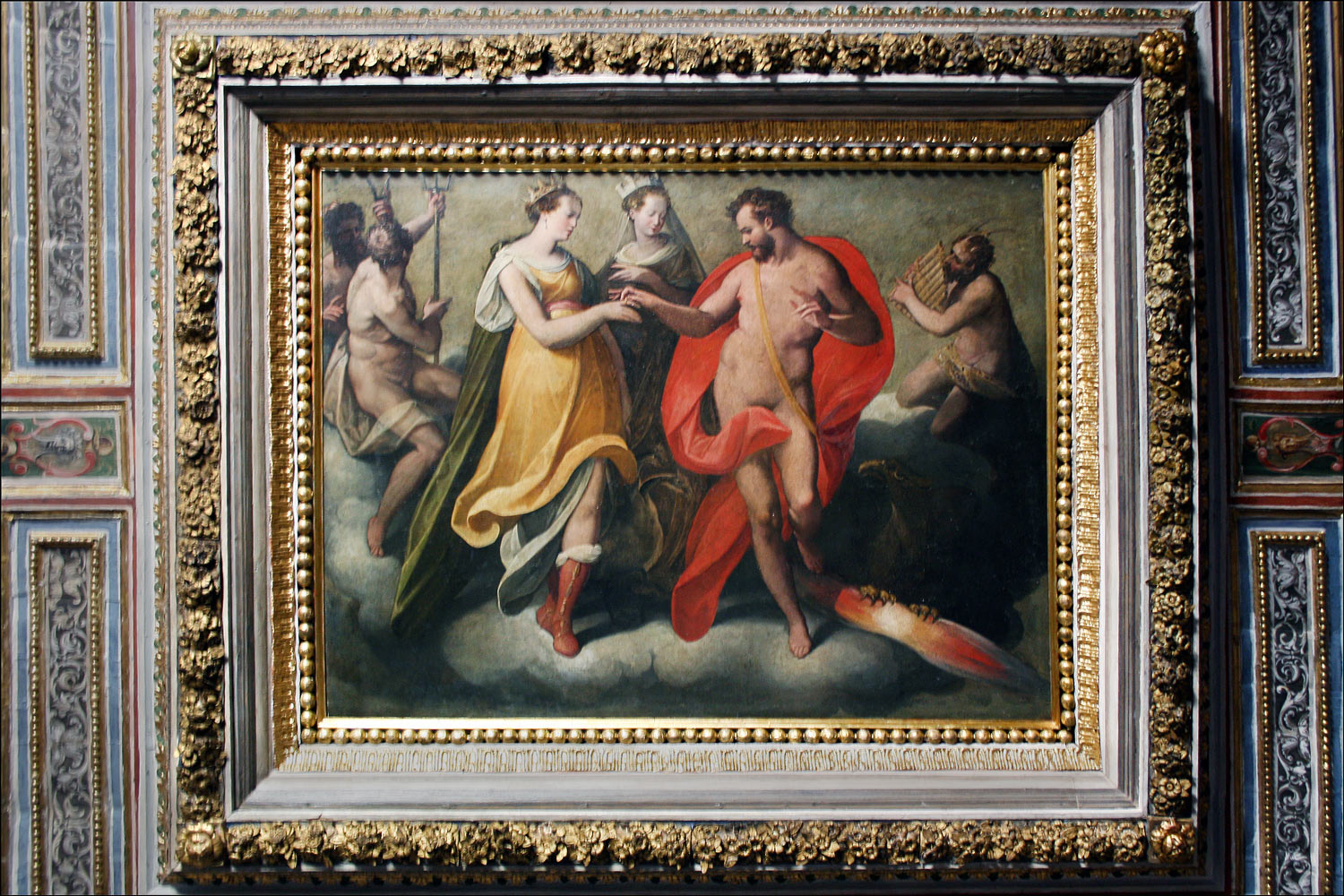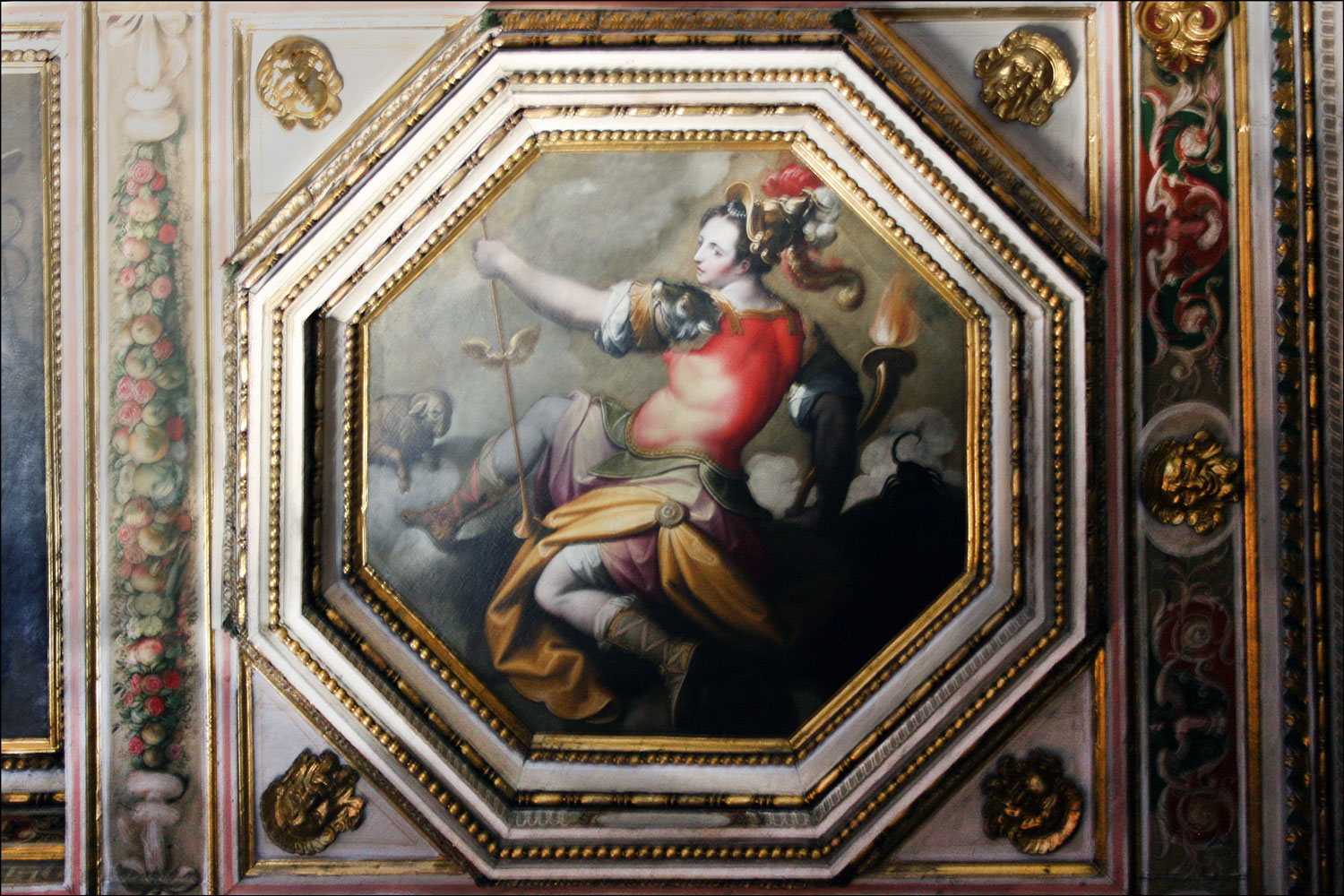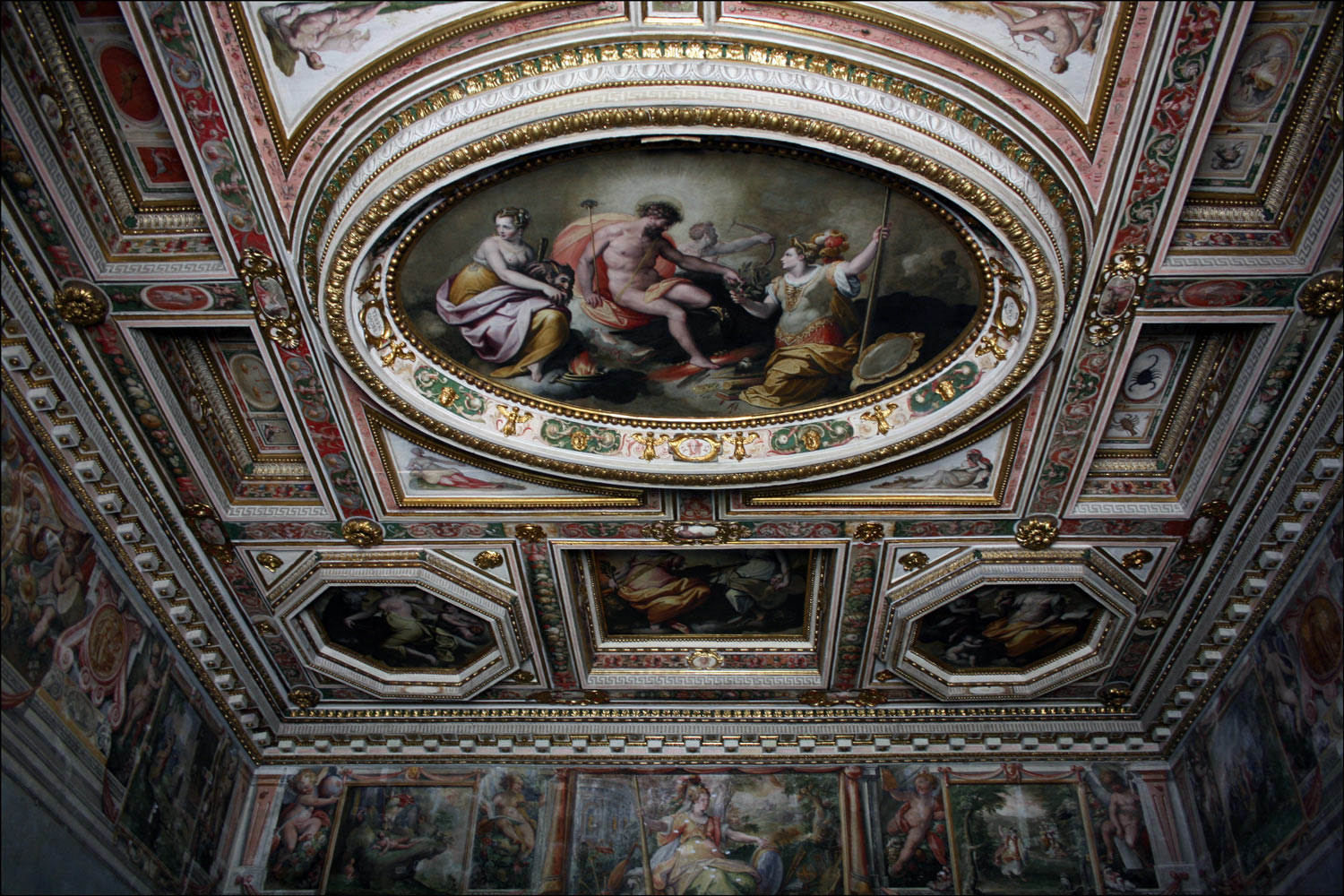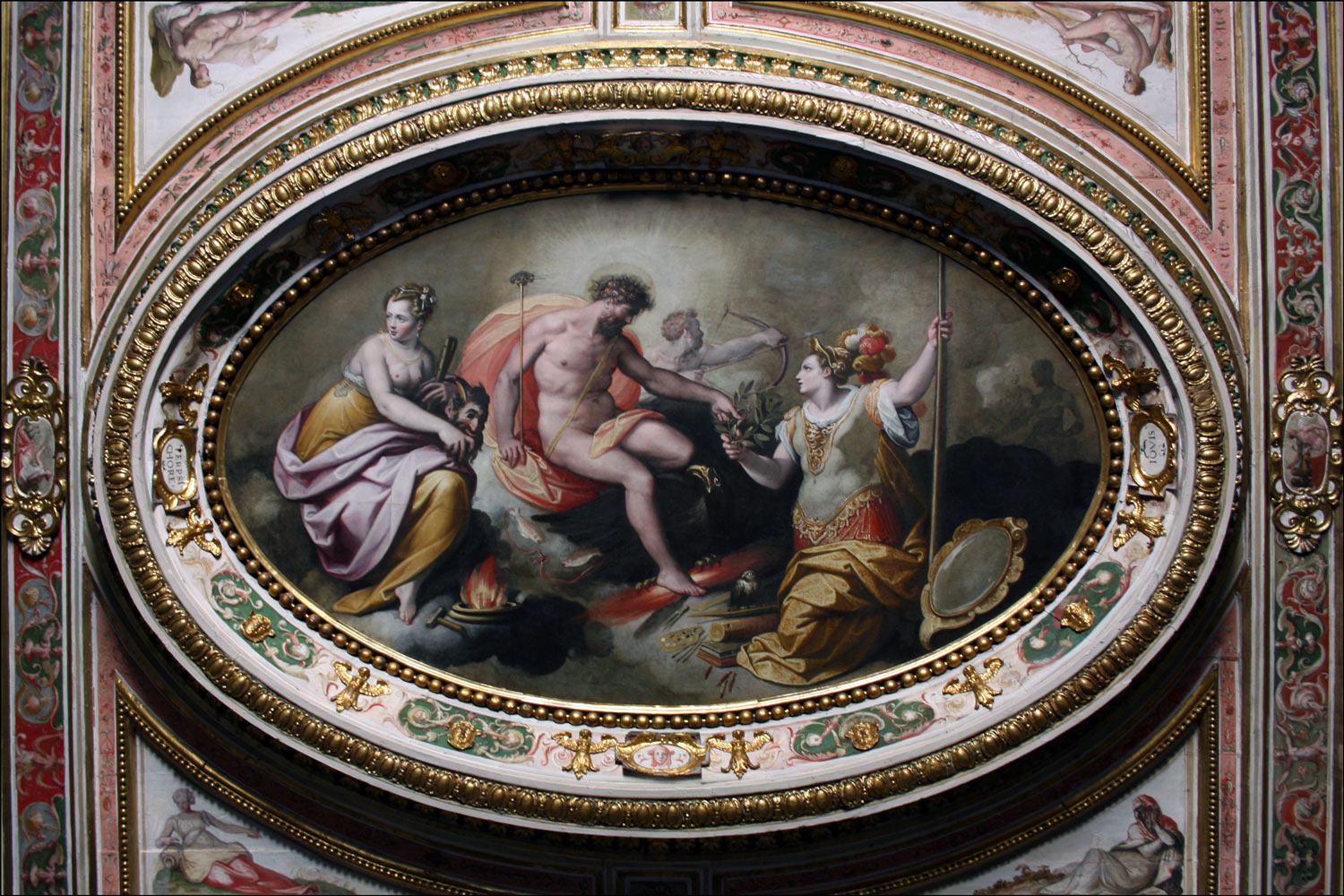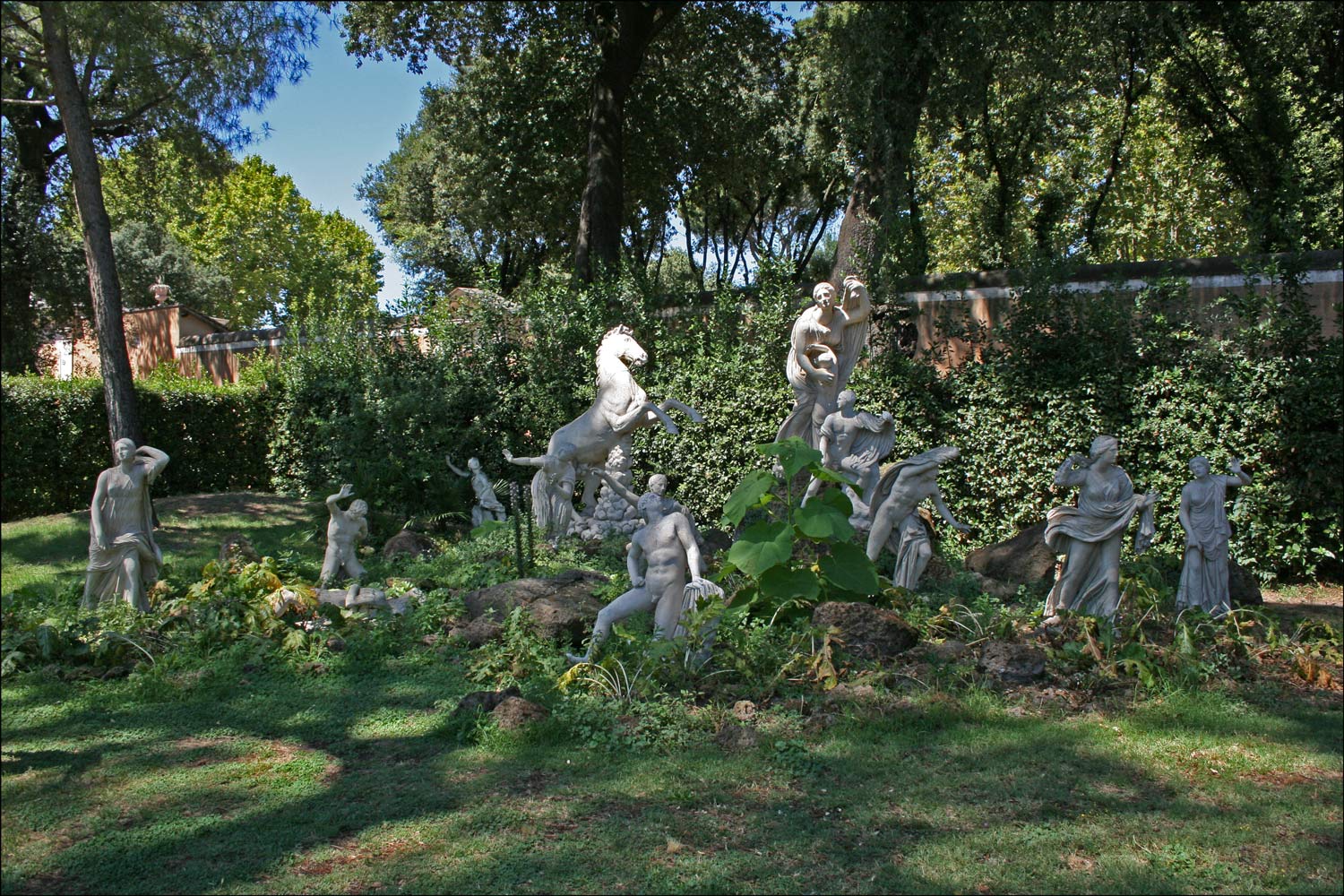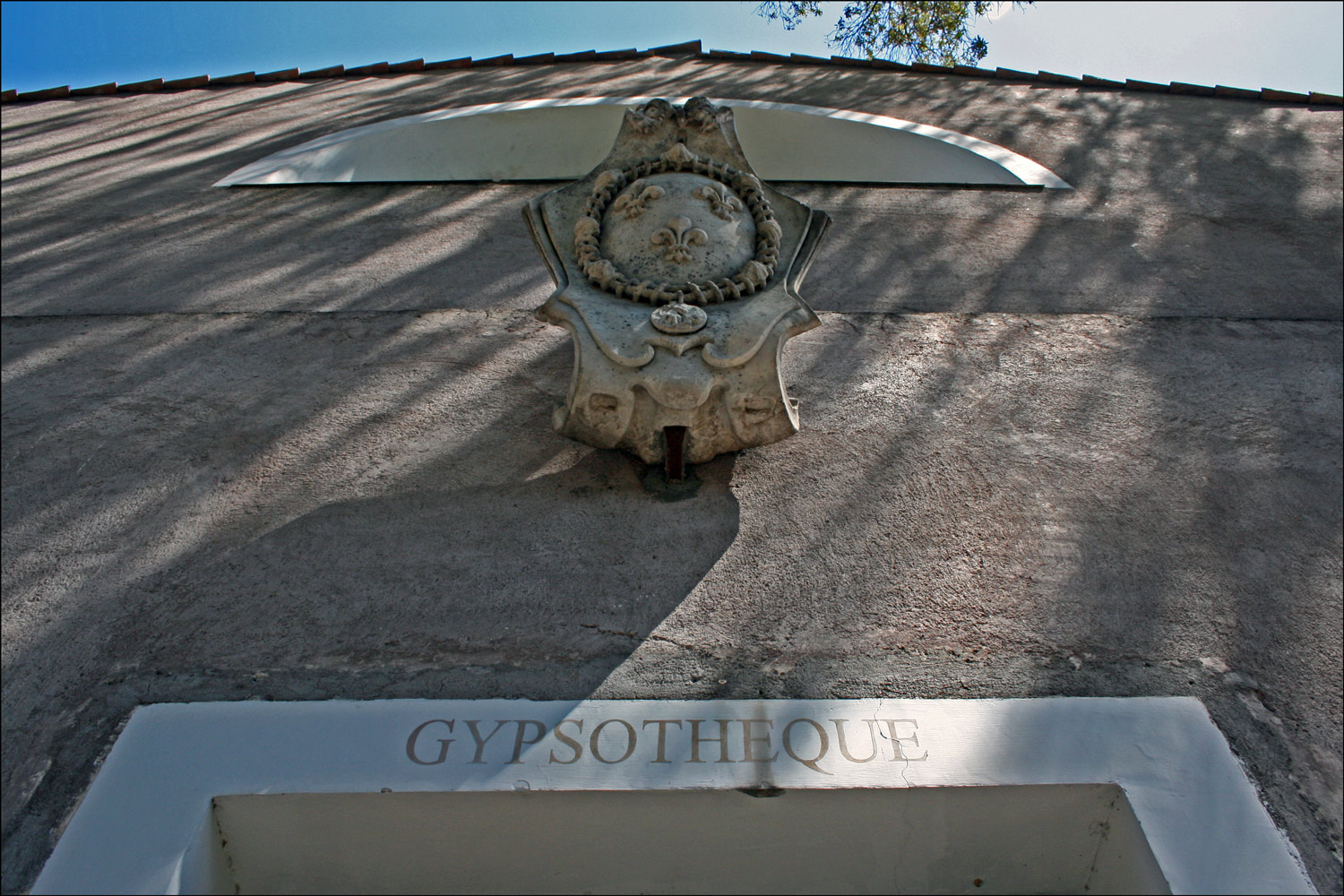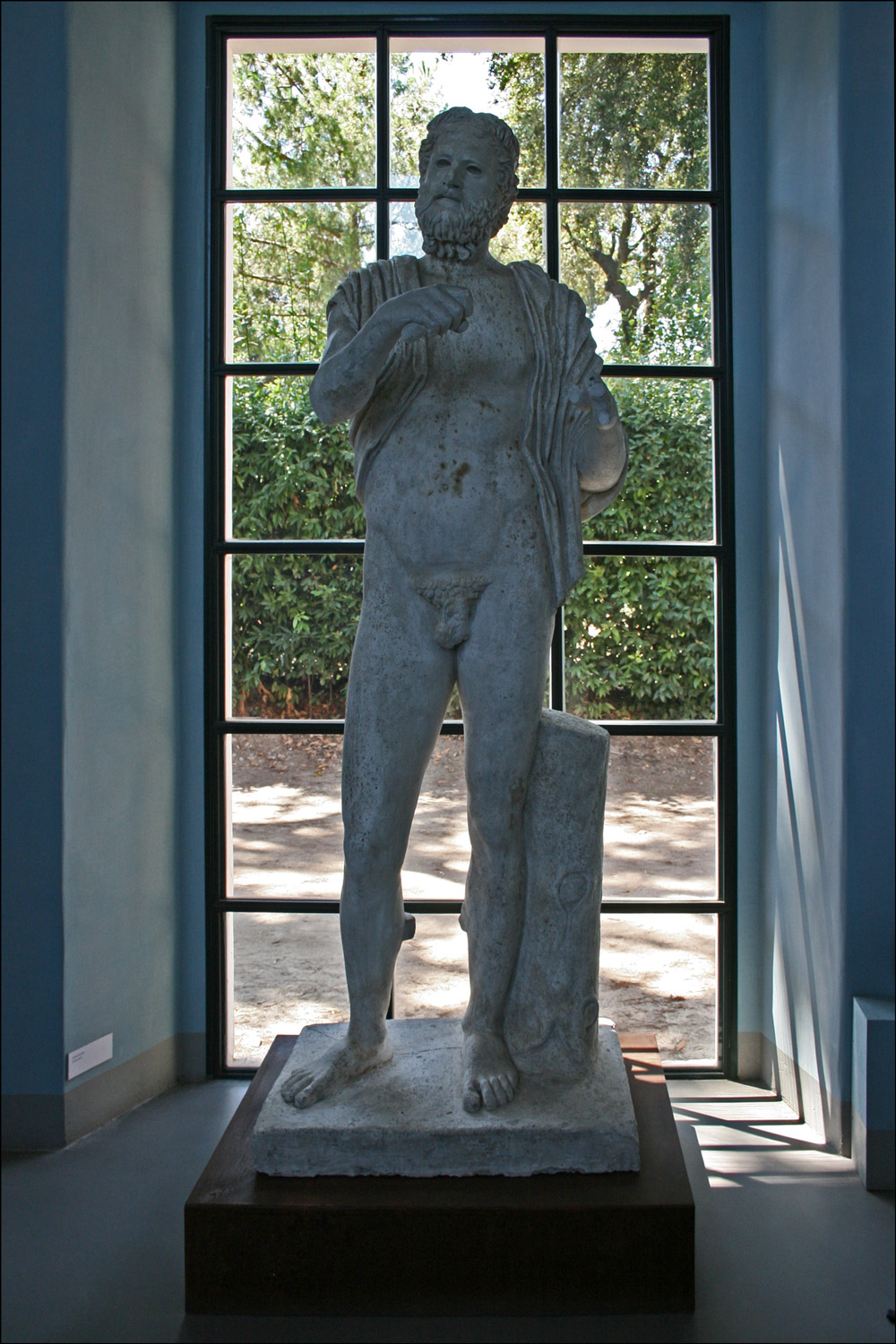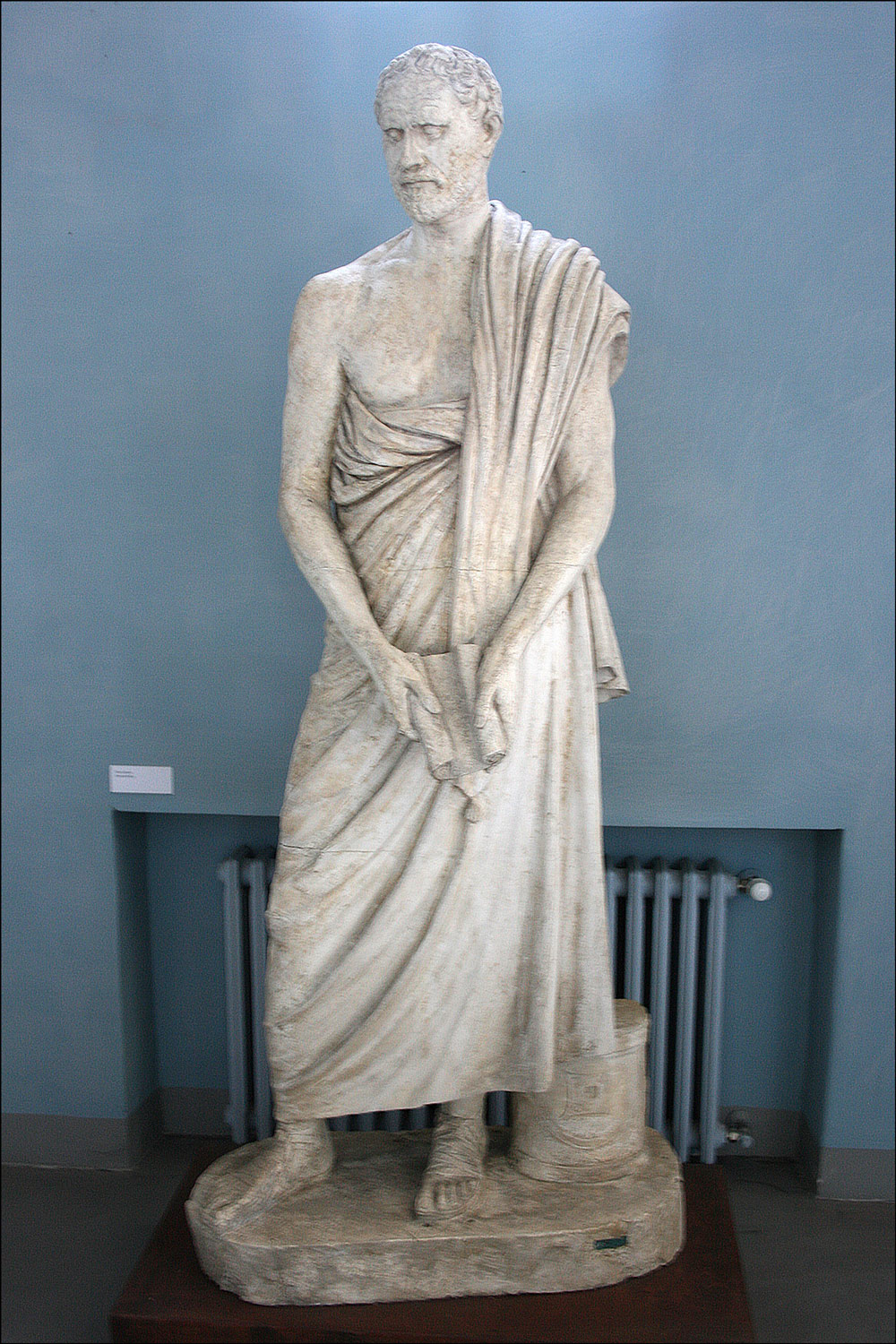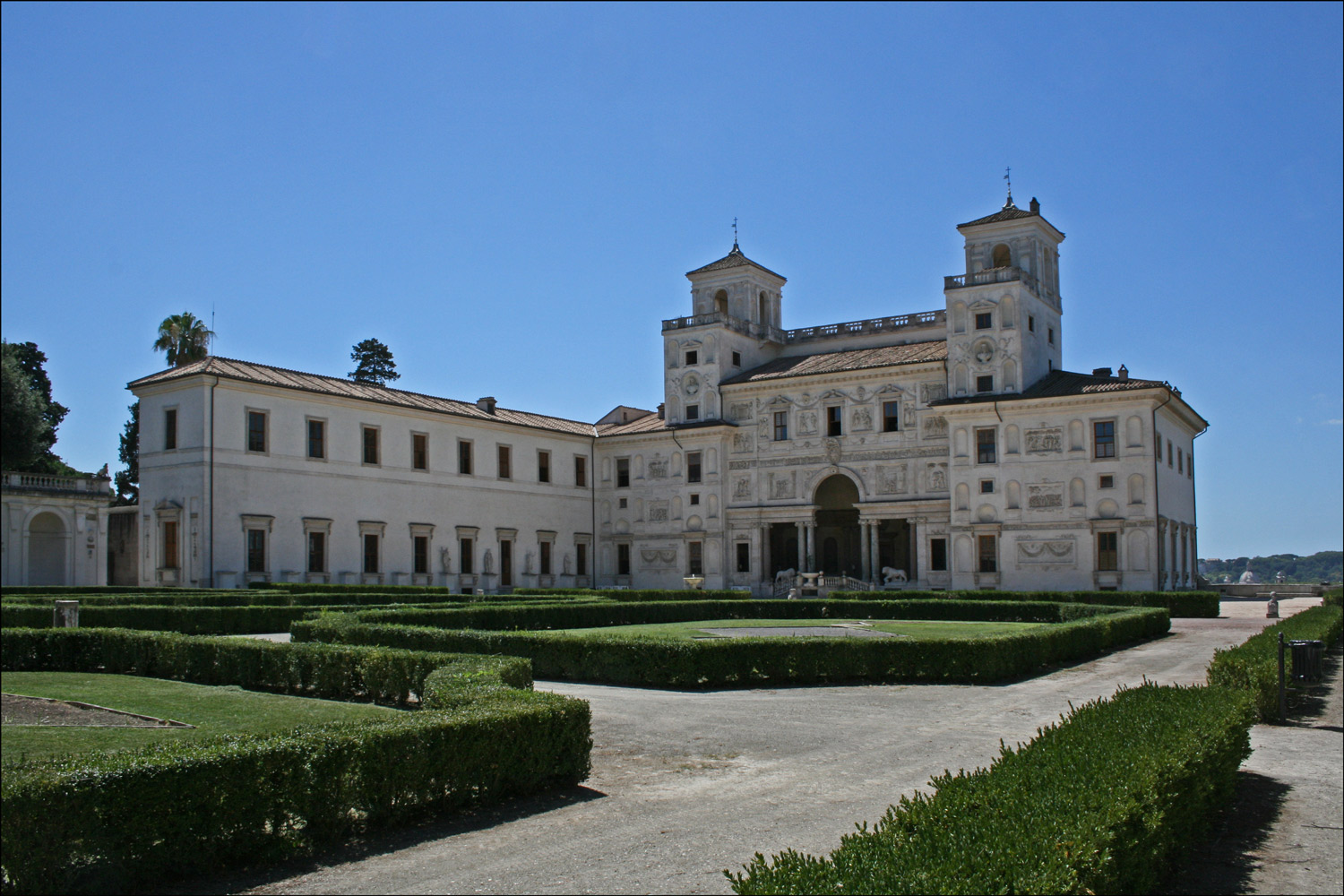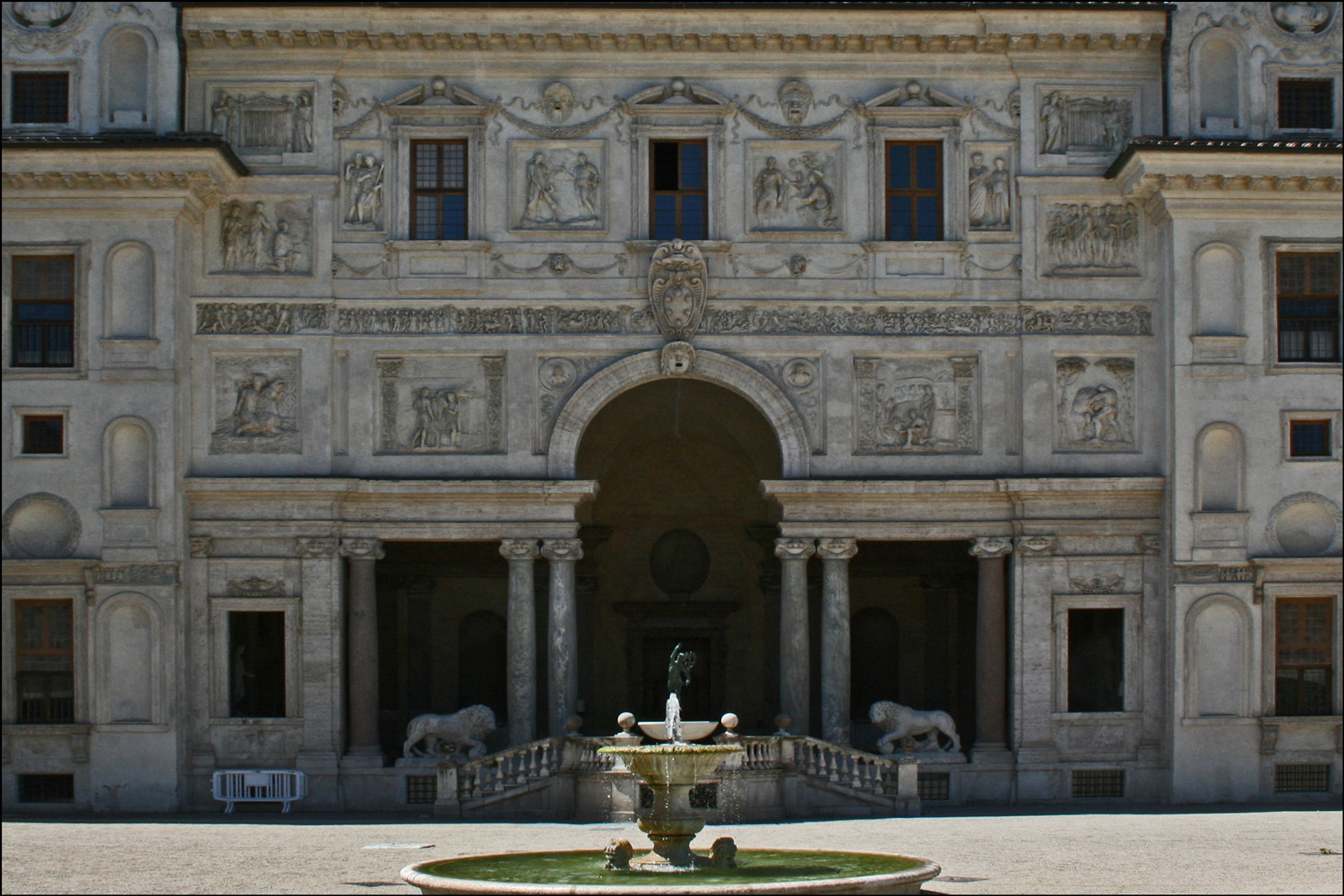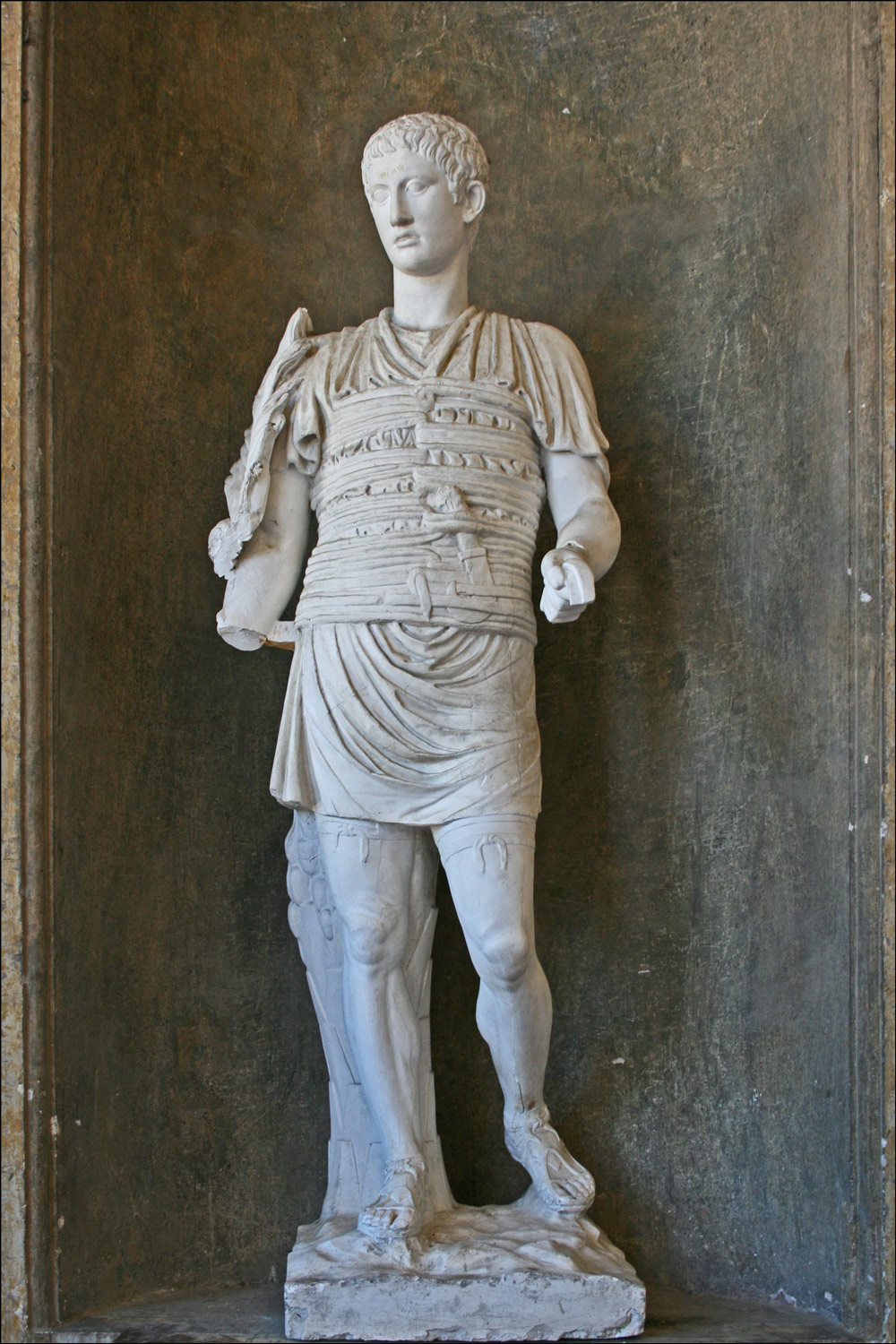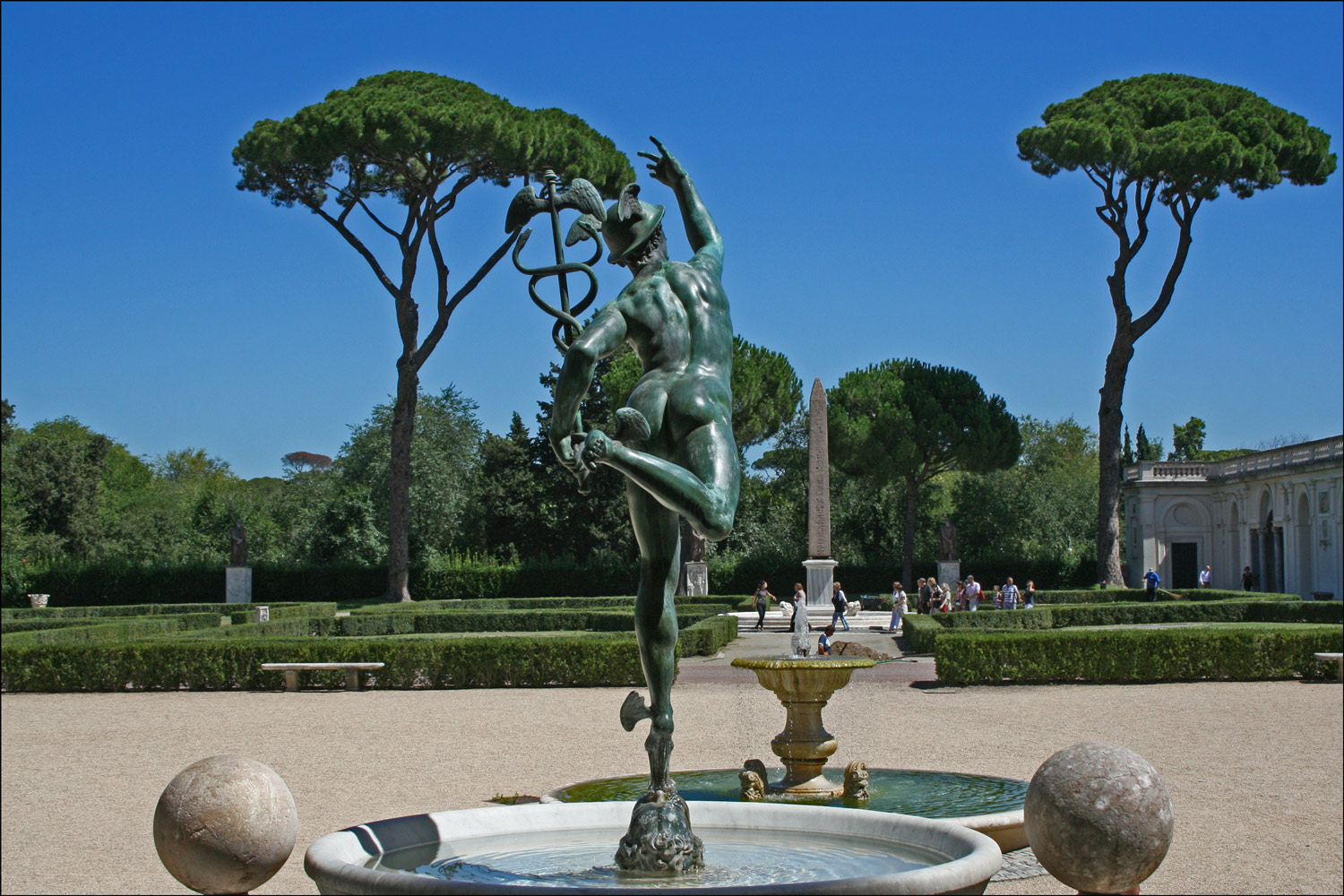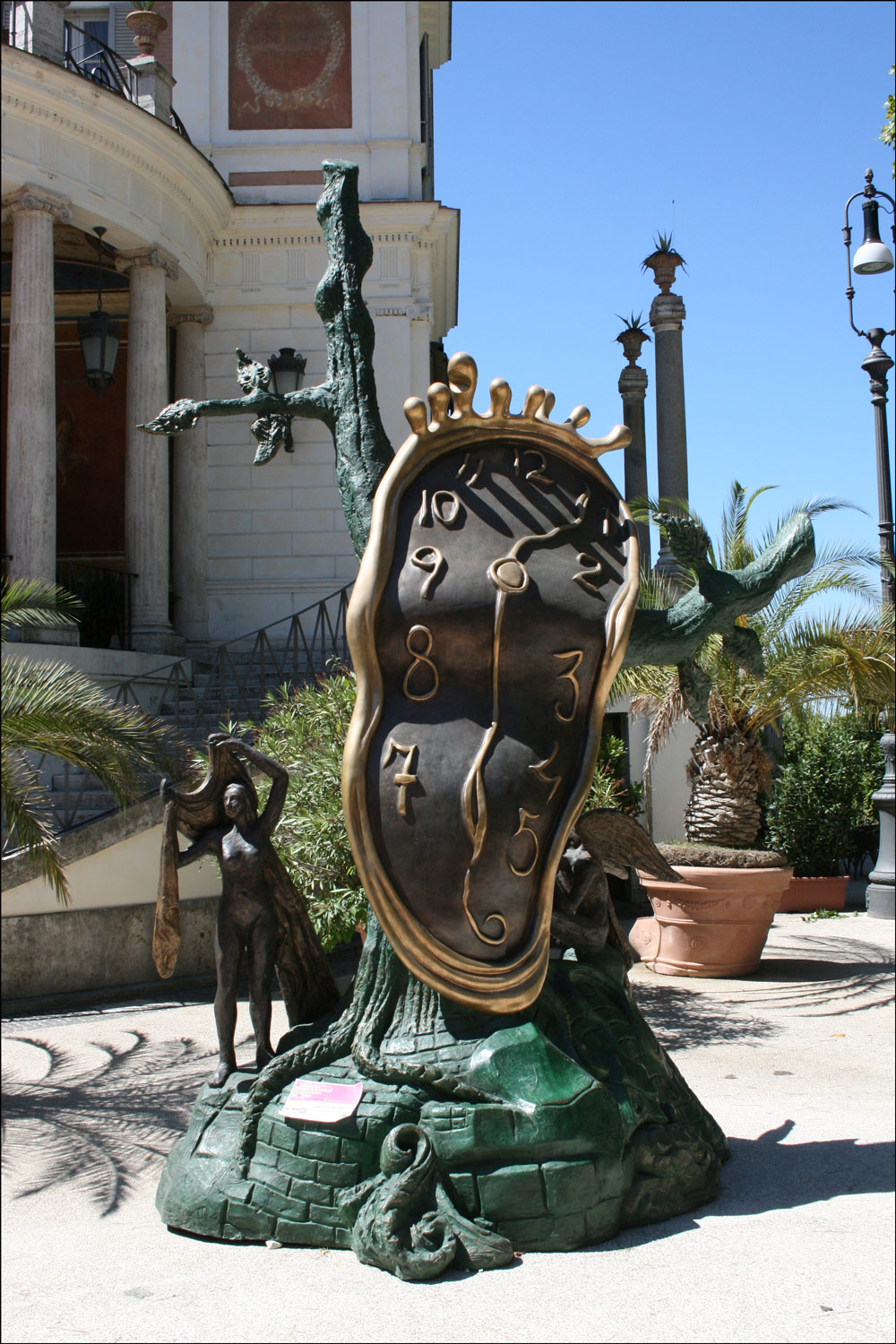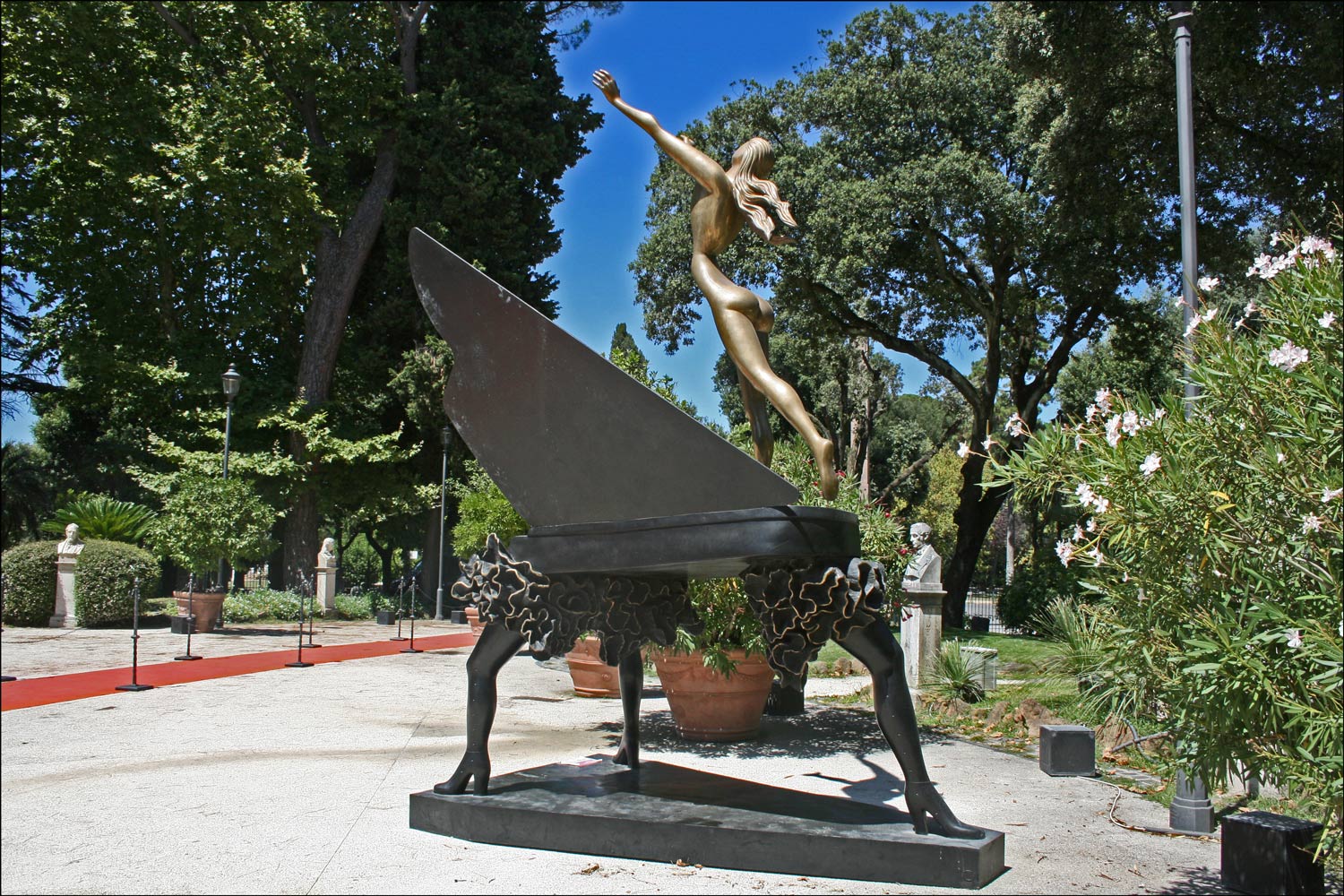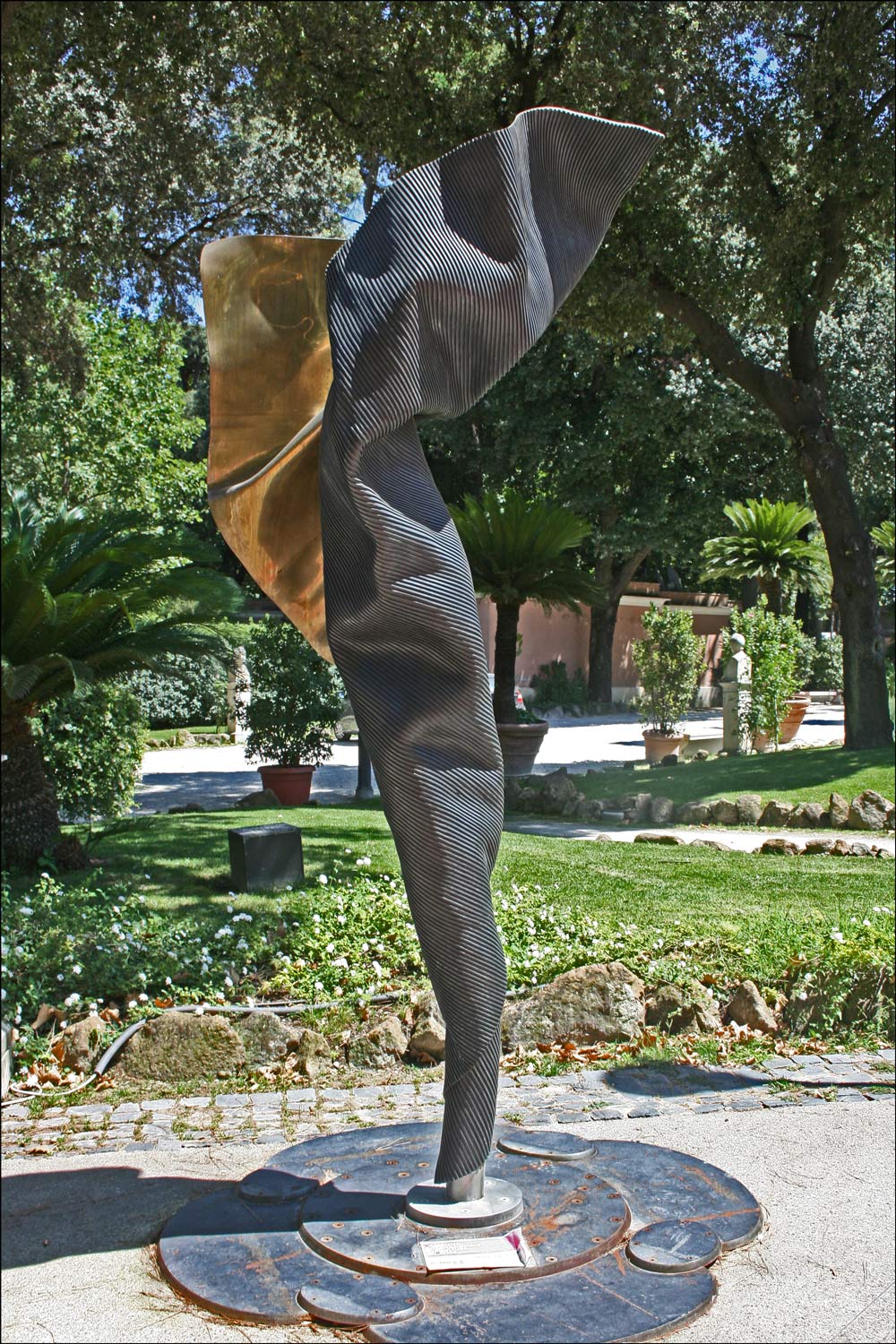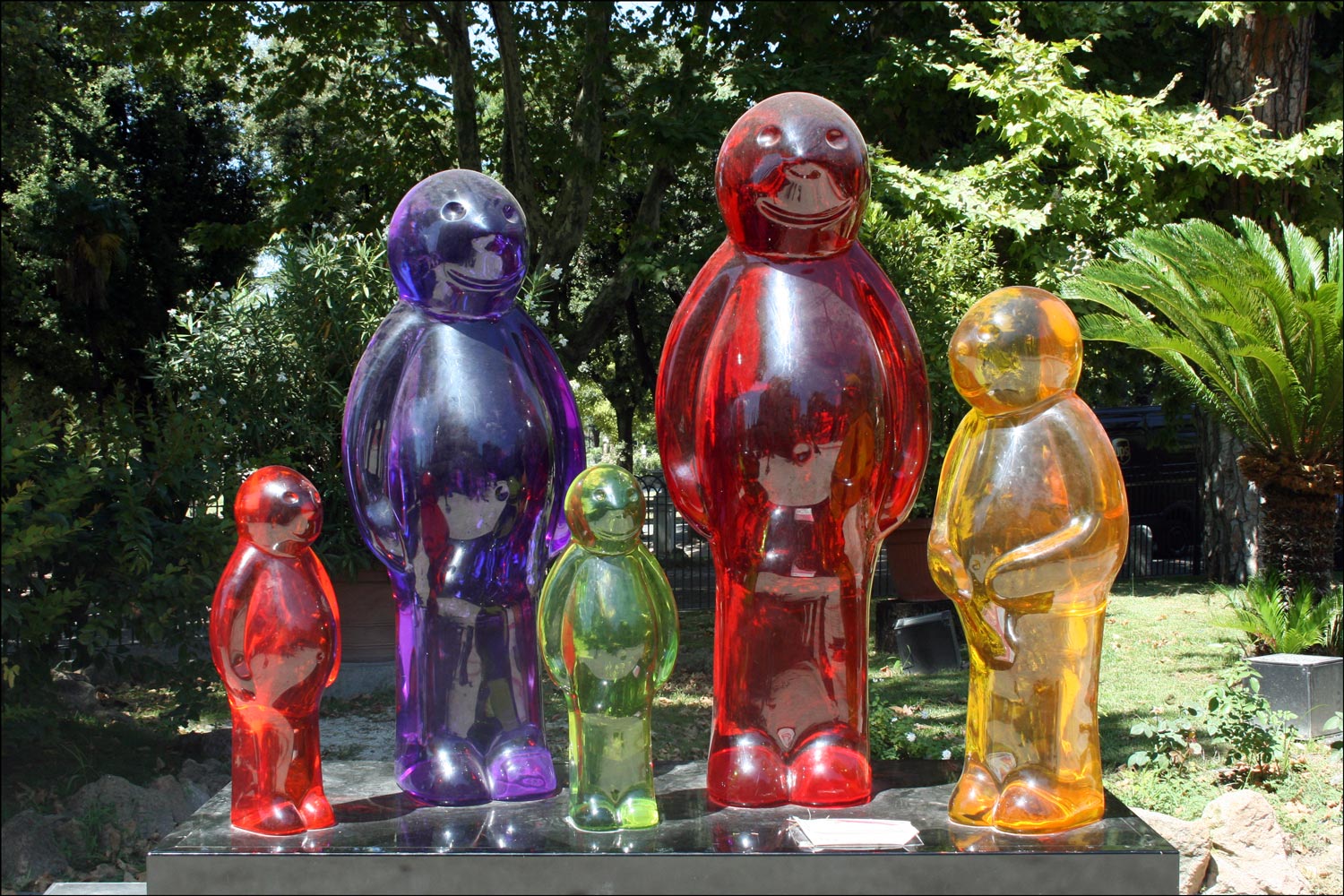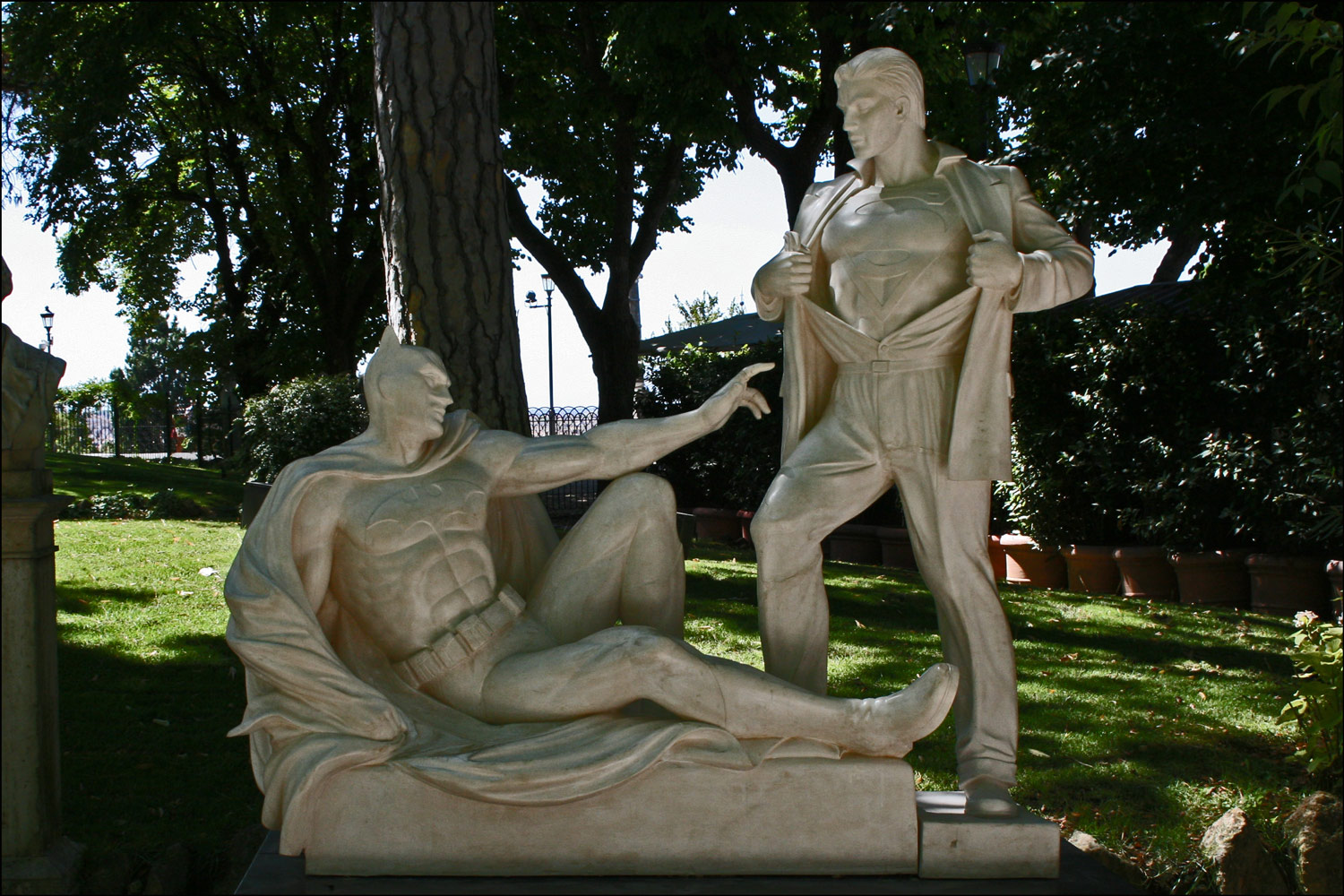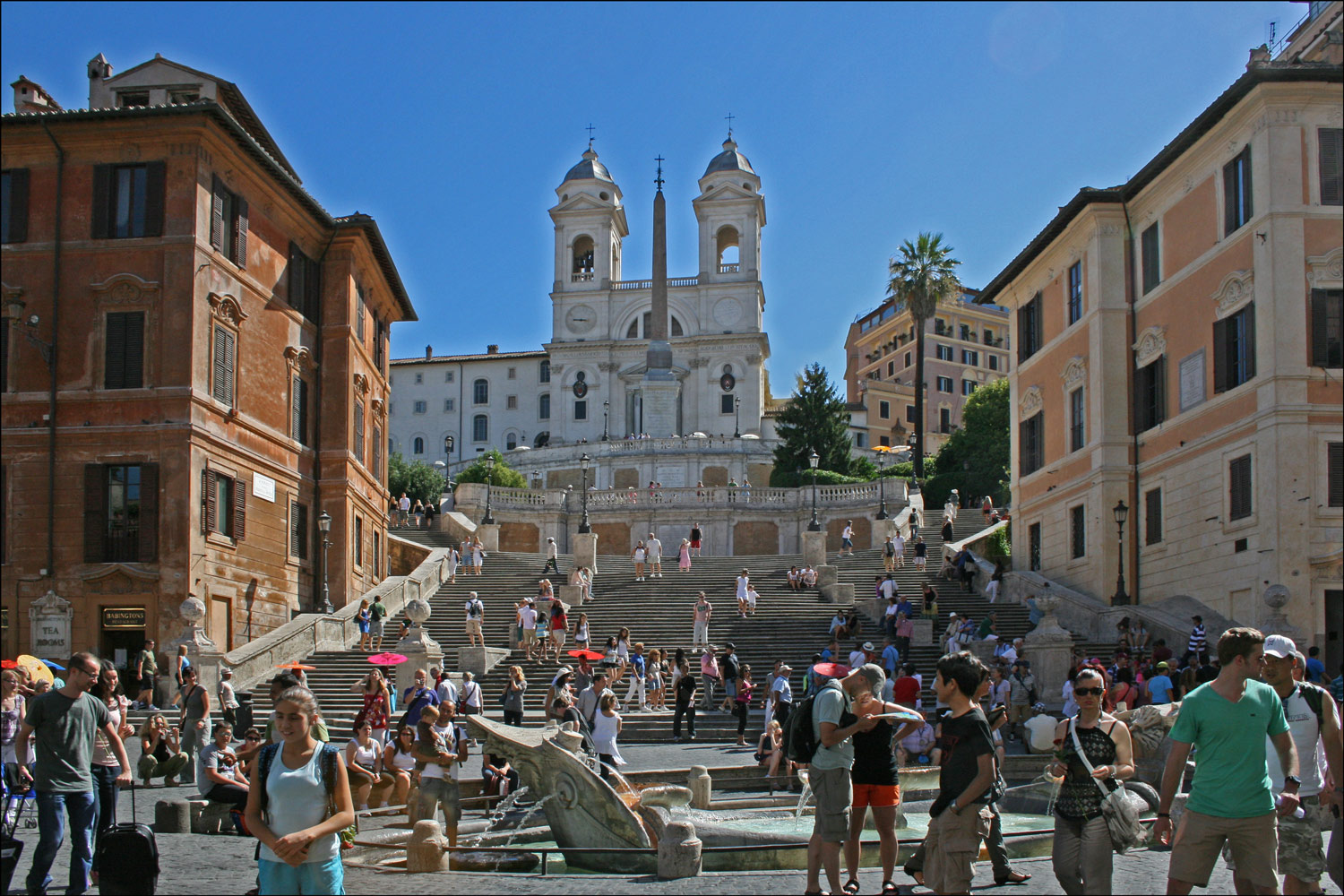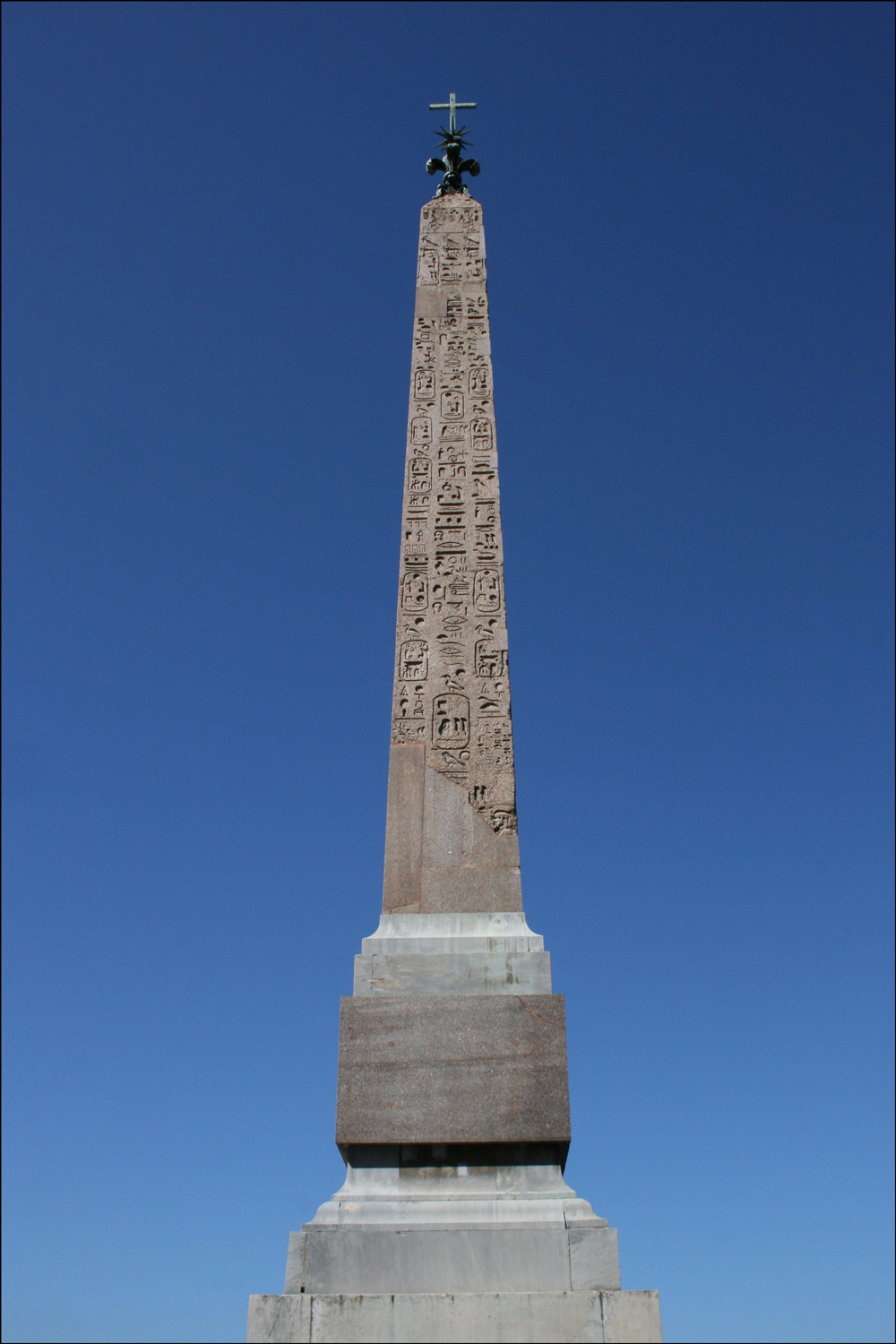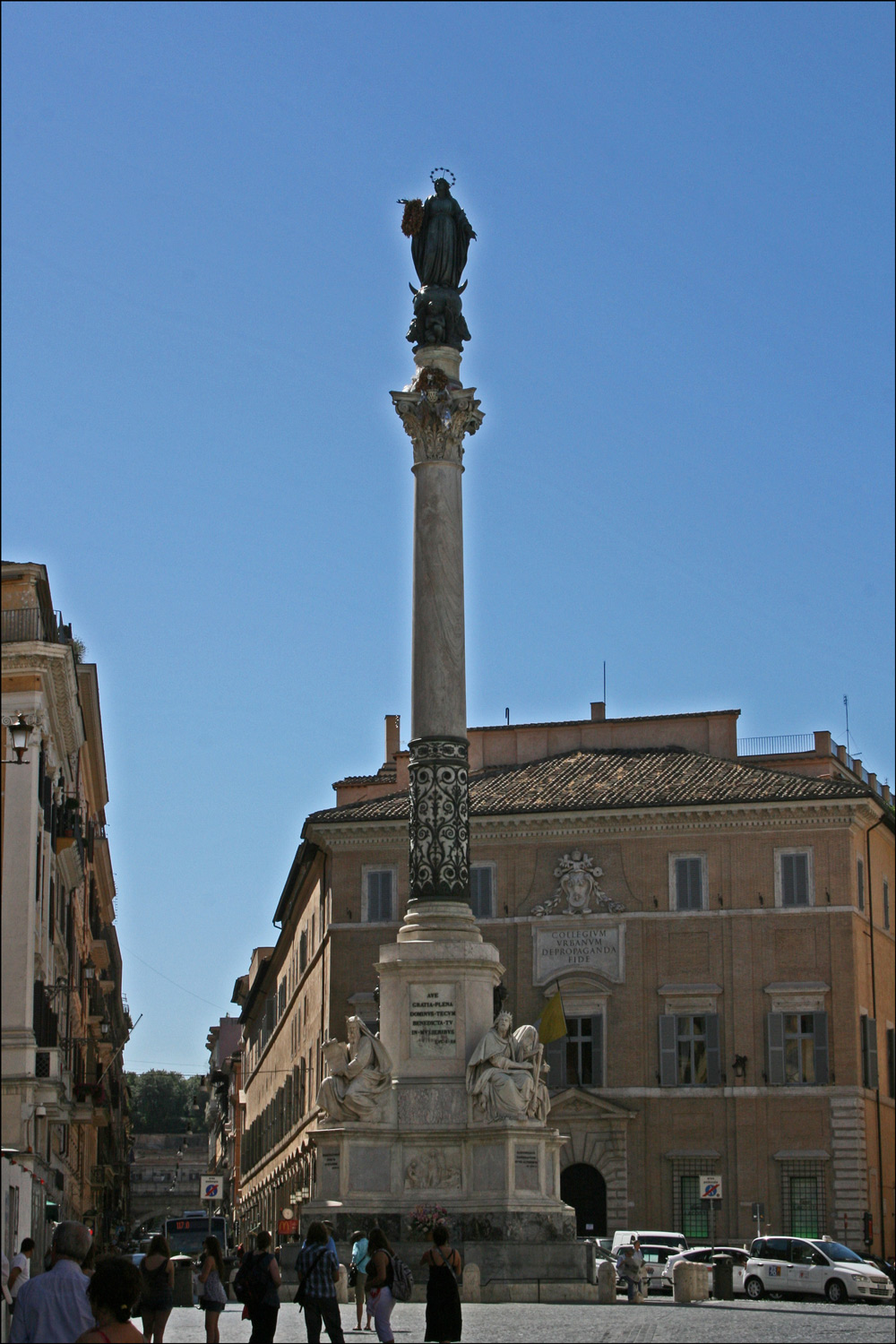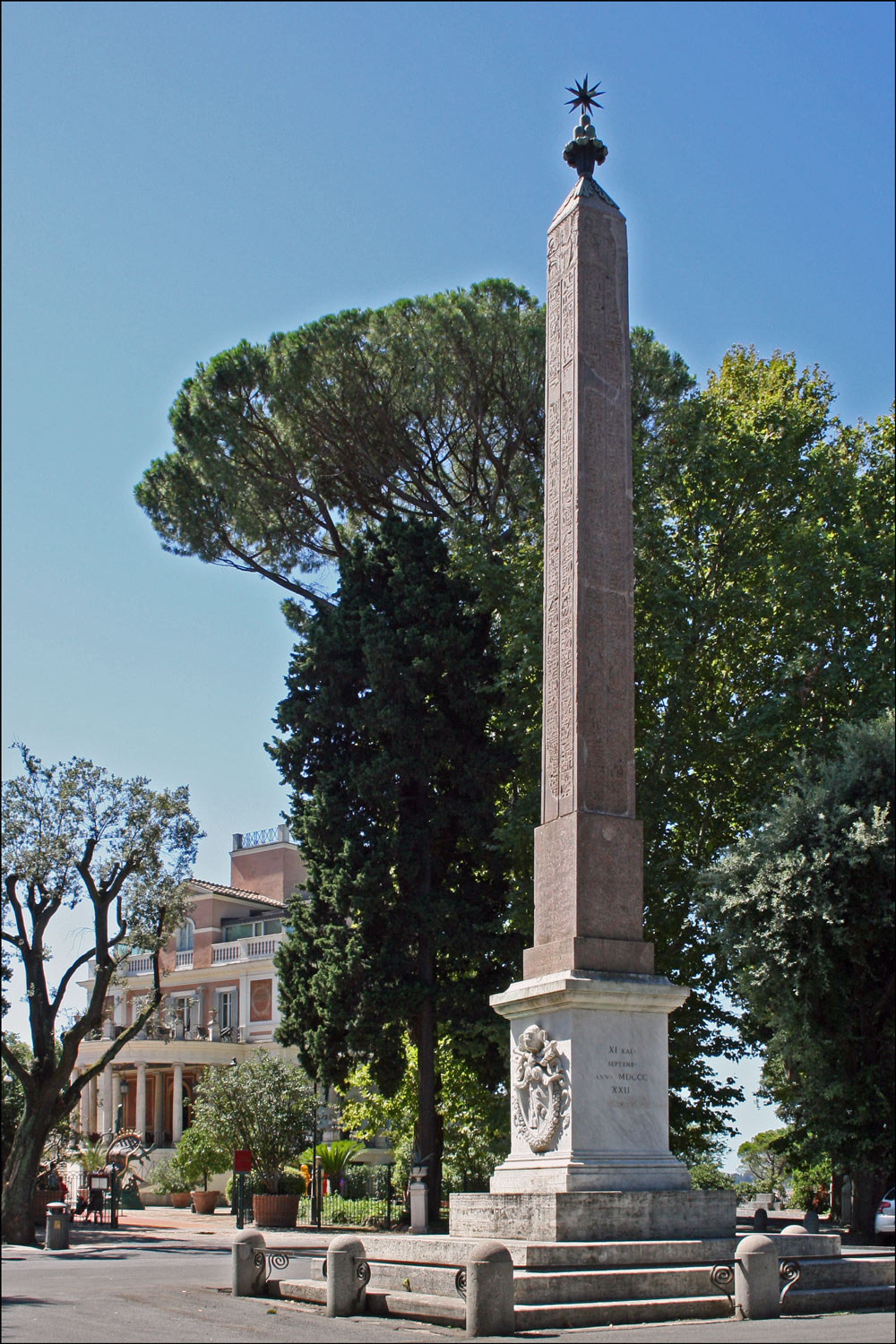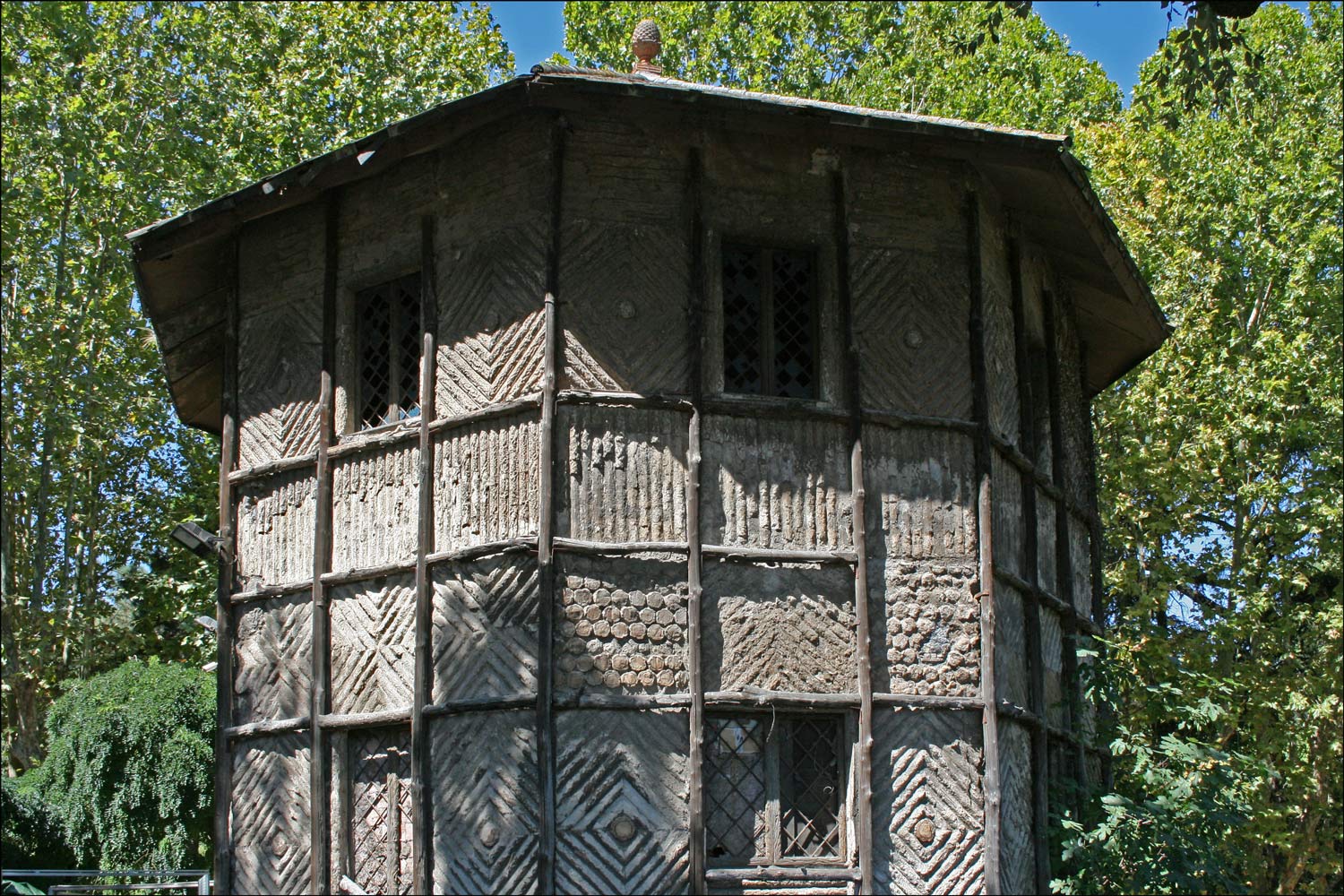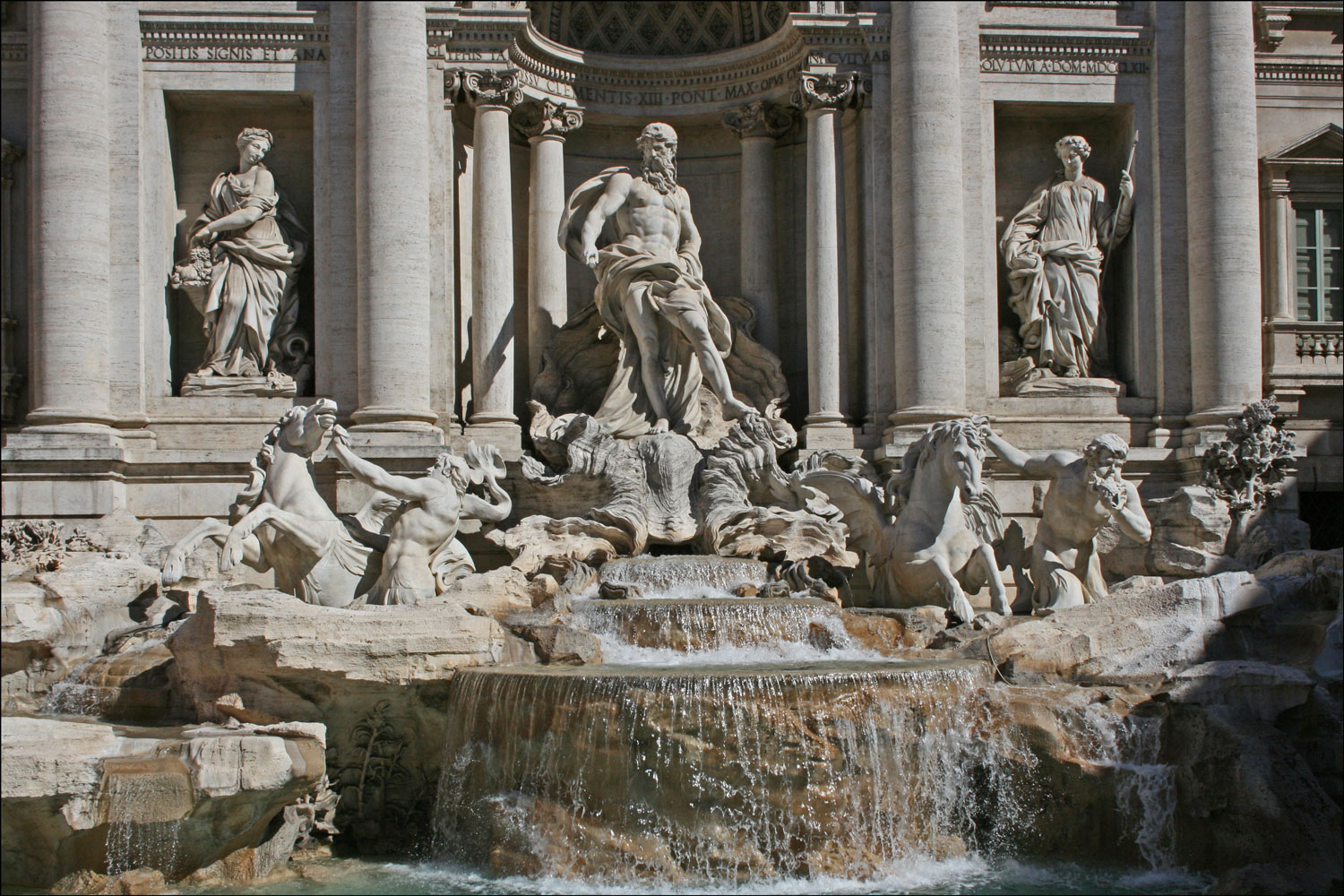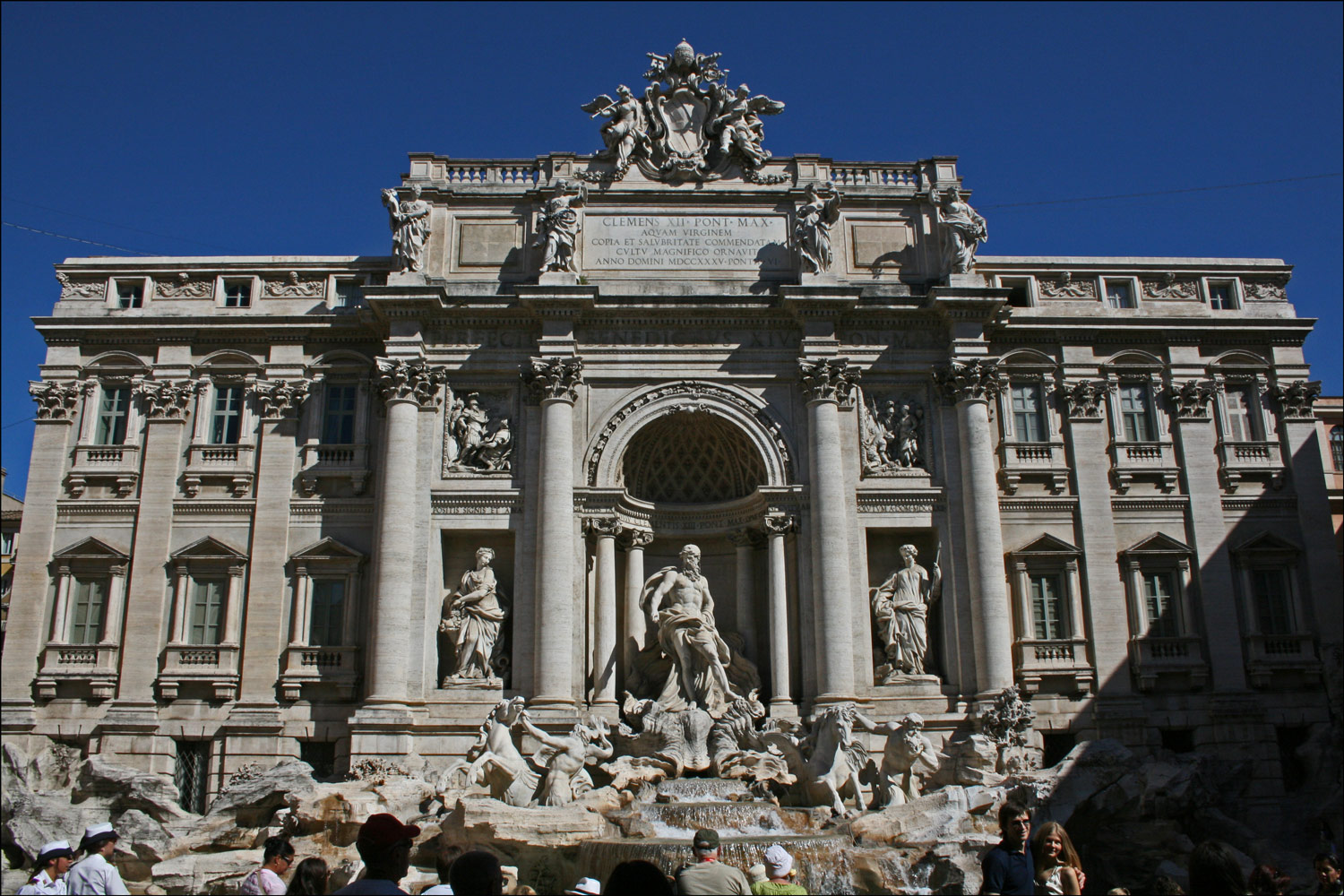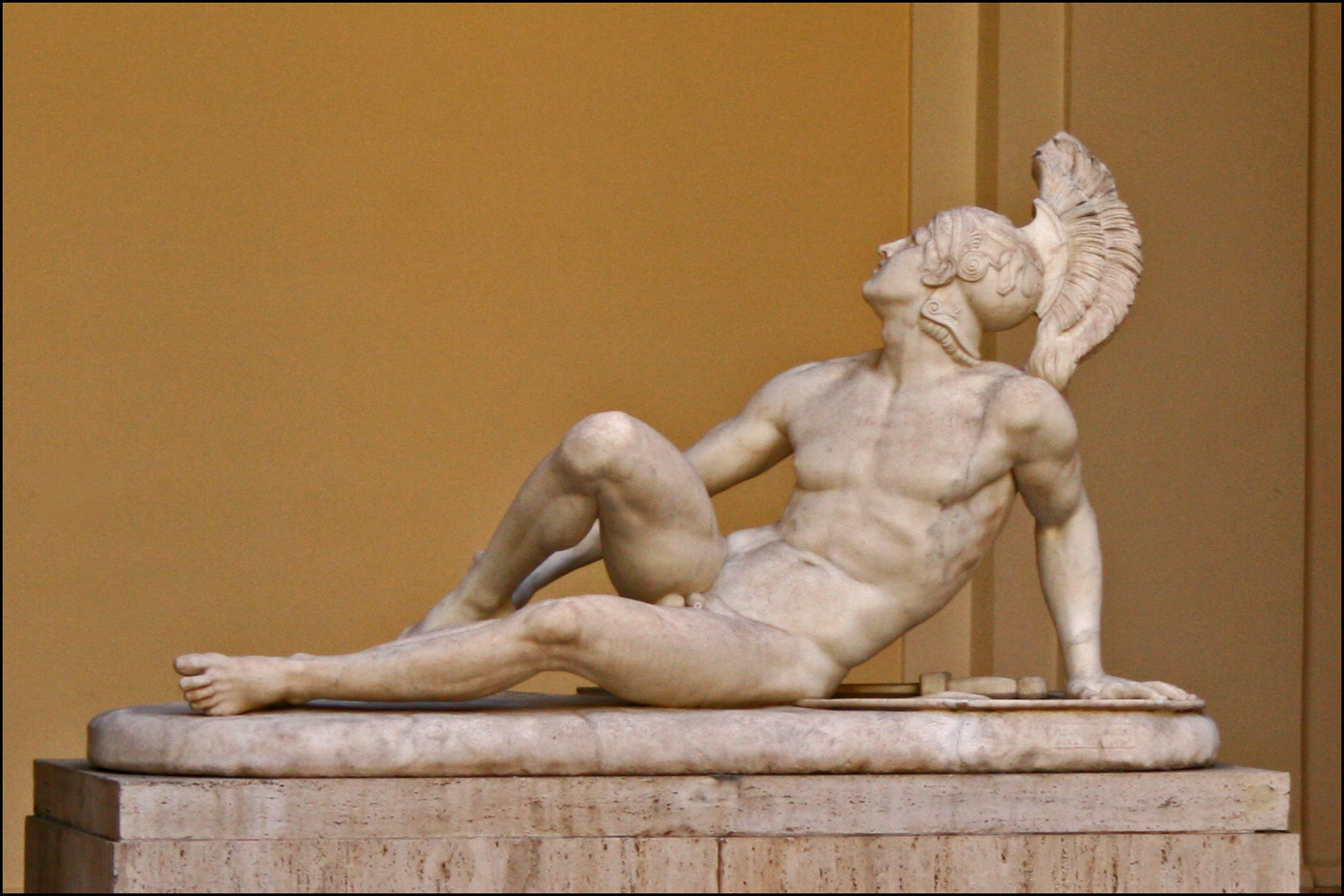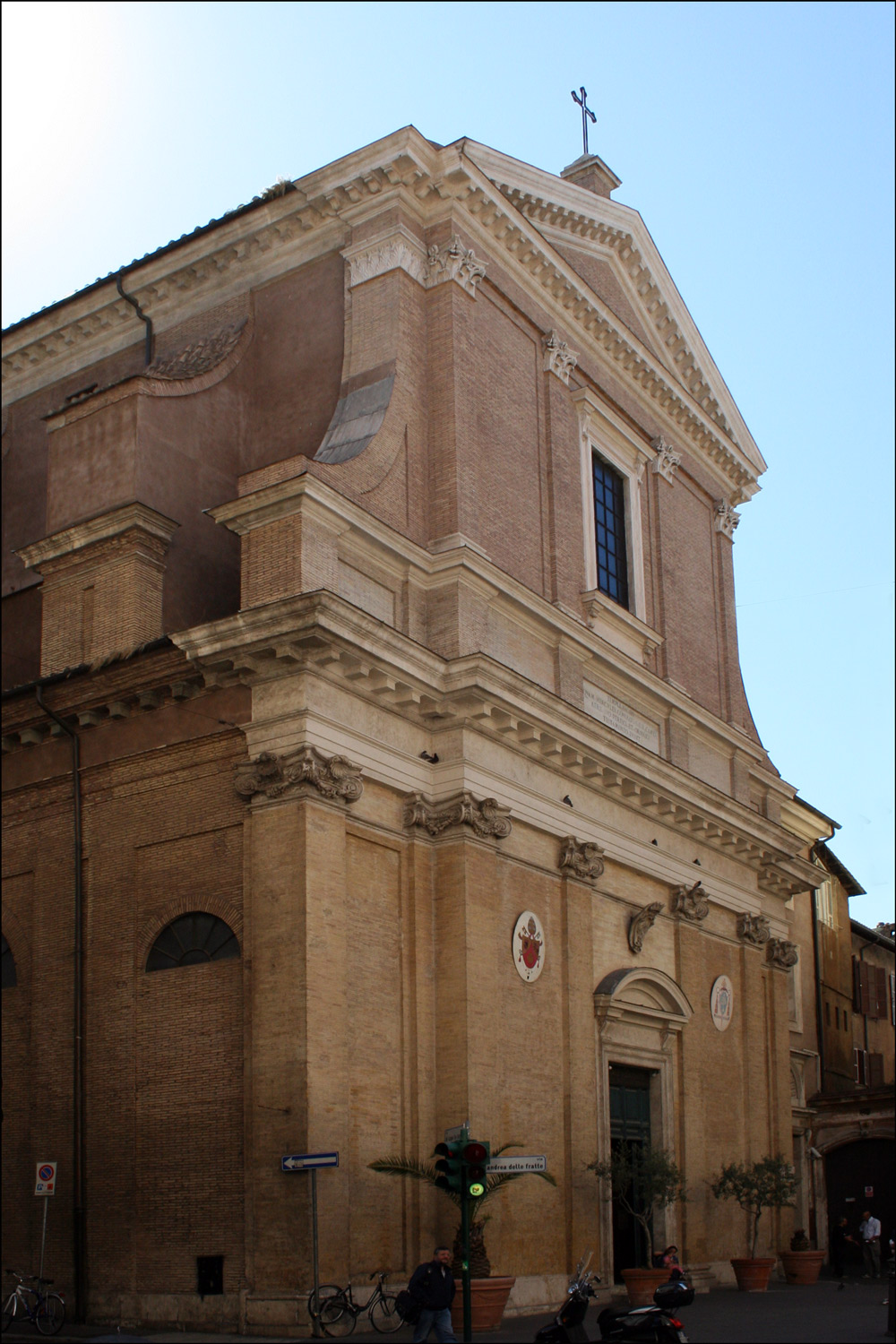The north and south sides of the Ara Pacis Augustae in Rome, Italy are difficult to photograph, mainly because the exterior walls of the structure are so close to the walls of the building that was built to enclose them. However, nearby there is a scale model of the Ara Pacis with a key to the figures depicted on the north and south walls.
The figures in the friezes of the north and south walls are all proceeding westward in double file, celebrating the Peace of Augustus. Those in the south wall are especially interesting because they include Emperor Caesar Augustus himself (though the image of Augustus is only partially recovered).
A fully recovered group includes the Roman statesman and general Marcus Vipsanius Agrippa who appears in the frieze with a hood over his head. Agrippa was married to Julia, daughter of Caesar Augustus and, one of their children, Gaius Caesar, appears in the frieze, clinging to the toga of his father. The woman who follows them is thought to be either Julia (wife of Agrippa and only child of Augustus) or Livia (third wife of Augustus and stepmother of Julia). Following Julia/Livia is Tiberius (son of Livia and stepson of Augustus) who, after the death of Augustus, would become the second emperor of Rome.
The interior of the Ara Pacis structure is decorated with reliefs of garlands strung from the skulls of bulls.
Ara Pacis Augustae – Model of North Wall
SOURCE: Ara Pacis Augustae – Model of North Wall (Rome, Lazio, Italy); photographed by Stephen J. Danko on 11 August 2011.
Ara Pacis Augustae – Model of South Wall
SOURCE: Ara Pacis Augustae – Model of South Wall (Rome, Lazio, Italy); photographed by Stephen J. Danko on 11 August 2011.
Detail of Agrippa Group on the Ara Pacis Augustae
SOURCE: Detail of Agrippa Group on the Ara Pacis Augustae (Rome, Lazio, Italy); photographed by Stephen J. Danko on 11 August 2011.
Garland on the Interior of the Ara Pacis Augustae
SOURCE: Garland on the Interior of the Ara Pacis Augustae (Rome, Lazio, Italy); photographed by Stephen J. Danko on 11 August 2011.
Copyright © 2011 by Stephen J. Danko

